50 Best Things To Do in Barcelona According to a Local
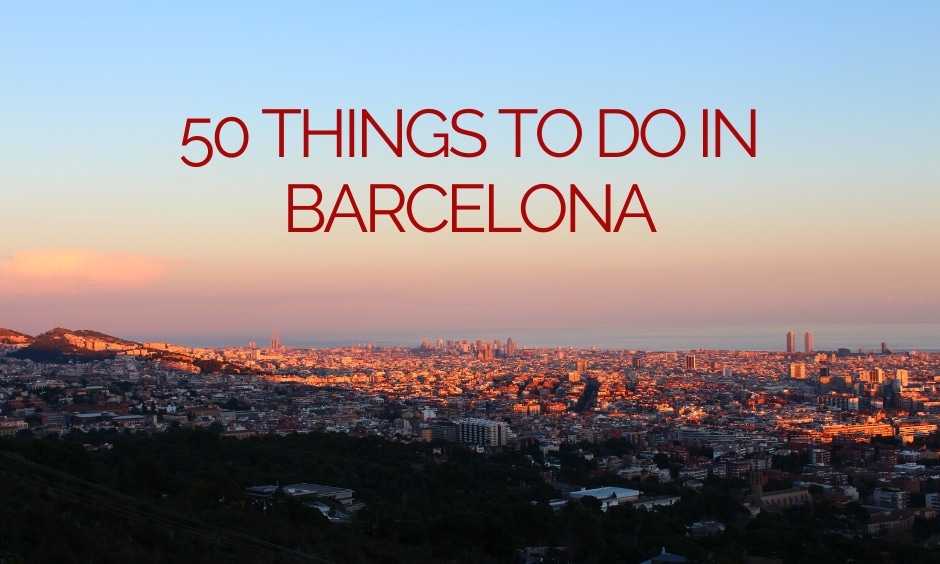
What to visit and what to do in Barcelona? The list is long… Even though I’ve been living here for more than twenty years, I’m always finding new things to do in Barcelona, as the resources of my adopted city are inexhaustible.
To help you choose, I’ve put together a list of 50 beautiful places and cool, unusual, or pleasant activities to see or do in the Catalan capital.
- I have classified these 50 activities under 9 different headings (headings 2 to 10 in the index). If you choose at least one activity from each main heading, your stay will be even more varied.
- Afterwards, I have chosen 3 themes that will help you organise your tourist stay in Barcelona (headings 11 to 13 of the index).
- 1 Passes to visit Barcelona: which one do you like best?
- 2 Things to do in Barcelona: see Gaudí’s main masterpieces
- 3 Visit other Art Nouveau masterpieces
- 4 Visiting Barcelona’s emblematic districts and places
- 5 Visiting Barcelona’s museums and foundations
- 6 Off the beaten tracks things to do in Barcelona
- 7 More things to do in Barcelona: Discover Catalan gastronomy!
- 8 Things to do in Barcelona: Carpe Diem!
- 9 What else can you do in Barcelona? Going out at night
- 10 And finally… more ideas for enjoying the moment
- 11 What to do and see around Barcelona?
- 12 Things to do in Barcelona in 1, 2, 3, 4, 5 or more days!
- 13 What do in Barcelona all year round?
Passes to visit Barcelona: which one do you like best?
If you’re coming to Barcelona, you’re probably planning to explore the city and visit its main monuments and museums. The good news is that there are packages for easy travel and several passes that will allow you to save money and buy all your tickets at once.
The Hop On Hop Off Barcelona, perfect to discover the city in a short time
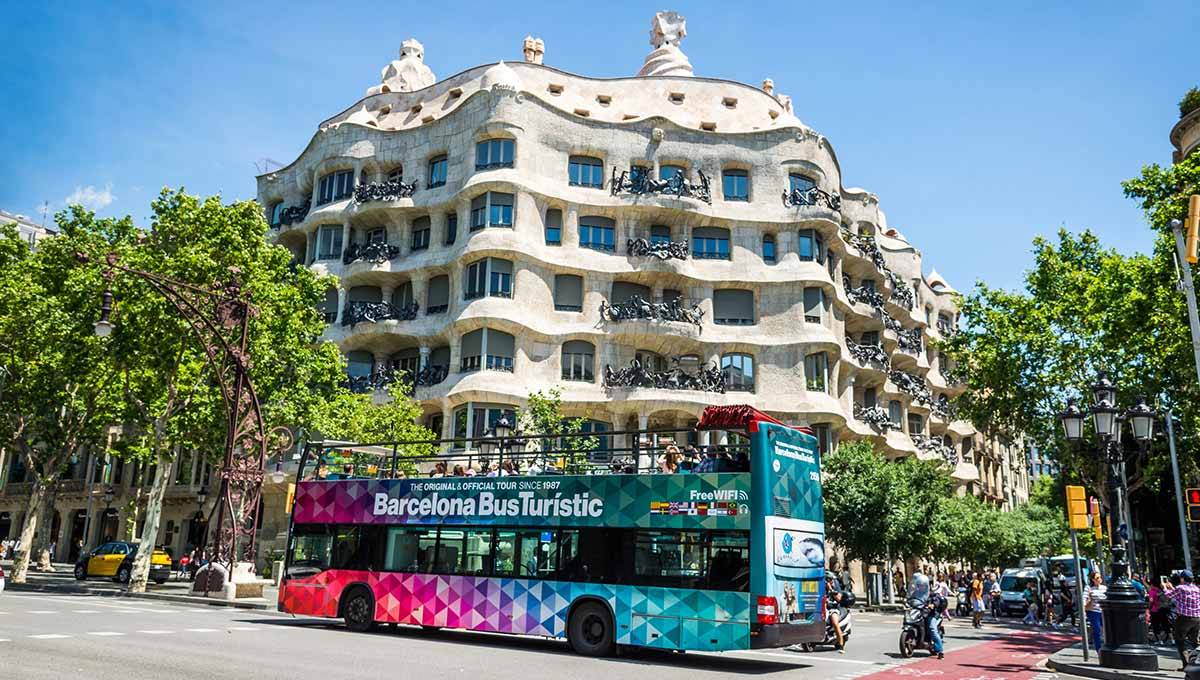
The Barcelona Hop On Hop Off is ideal for those of you who want to discover the city and all its monuments in one or two days. It will also allow you to find the places that you think are interesting and that you would like to visit.
We recently tried it again and we still think it’s a good plan.
The Barcelona Card: museums, unlimited public transport, and interesting discounts
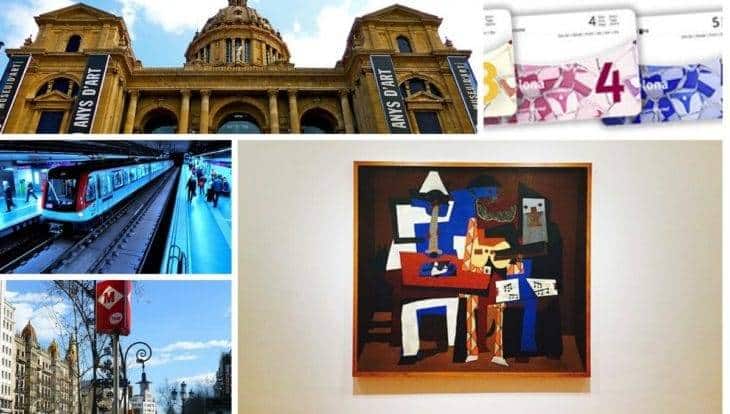
This pass includes entry to several museums in Barcelona, discounts on attractions, unlimited travel on public transport, and other exclusive benefits.
- We really think it’s a good option if you’re planning on visiting several museums, and we’ve even done a detailed analysis with examples of stays in our article on the Barcelona Card.
Hola Barcelona, unlimited public transport
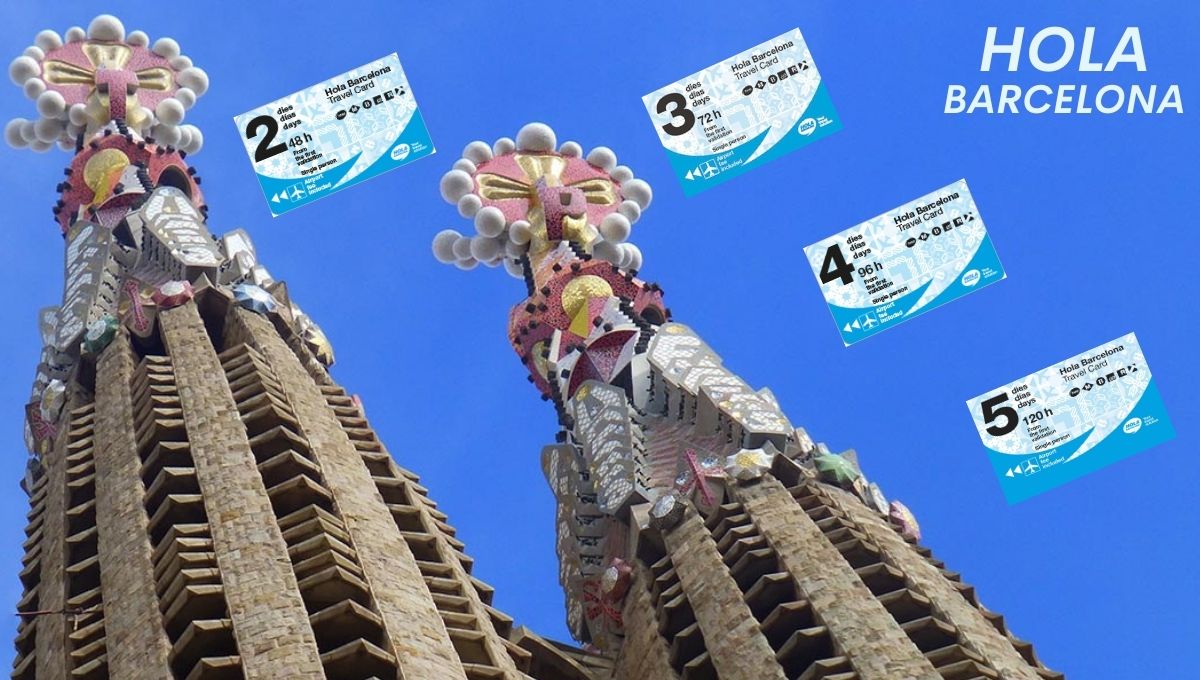
The Hola Barcelona is a very practical card that allows you to travel on public transport for an unlimited period of time (varying from 48 to 120 hours).
It includes journeys by metro, bus, ferrocarrils, Montjuic funicular, trams, and some regional train lines.
- Good deal: by buying it online, you will save 5% on the price of the Hola Barcelona.
Barcelona City Pass: Sagrada Familia, Parc Guell, Hop On Hop Off and discounts
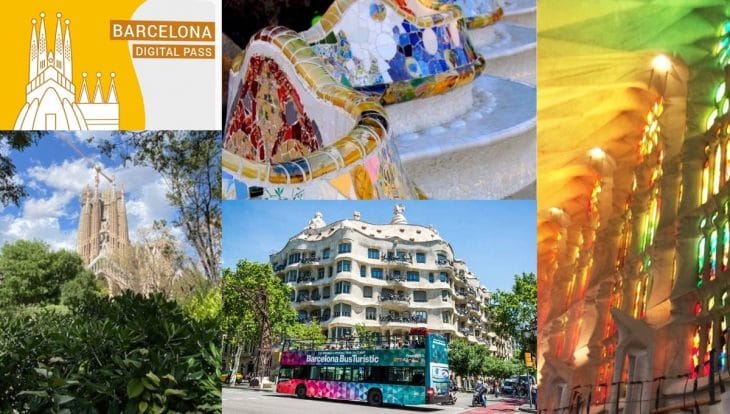
This pass includes a ticket for the Sagrada Familia, one for Park Güell, access to the Barcelona tourist bus, an audio guide application of Barcelona, and a 10% discount on your next purchase at Tiqets.com.
It is interesting if you don’t want the hassle of buying tickets individually, but we still think that you won’t necessarily save money by opting for the Barcelona Pass.
Articket: a passport to Barcelona’s art museums
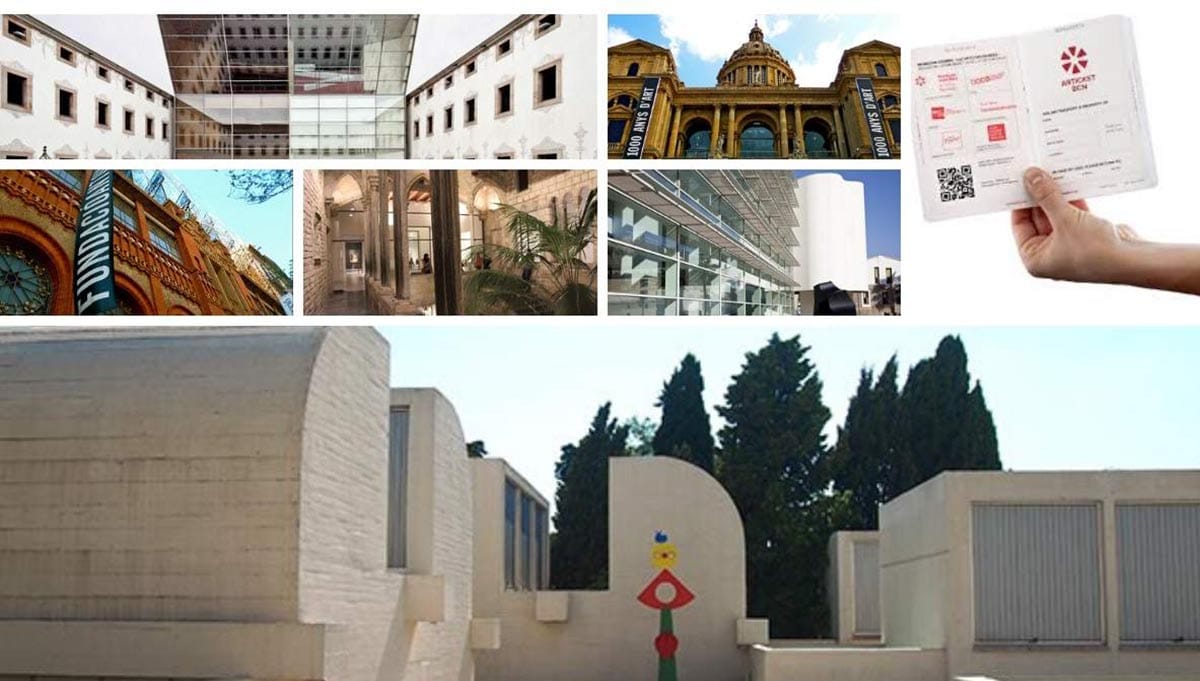
Have you come to Barcelona to visit its many art museums? The Articket is ideal for you!
For 38€, you will have priority access to all these museums:
- Museum of Picasso
- Barcelona Centre for Contemporary Culture (CCCB)
- Joan Miró Foundation
- Barcelona Museum of Contemporary Art (MACBA)
- Antoni Tàpies Foundation
- National Art Museum of Catalonia
Things to do in Barcelona: see Gaudí’s main masterpieces
1- Sagrada Familia: top 1 visit, top priority!
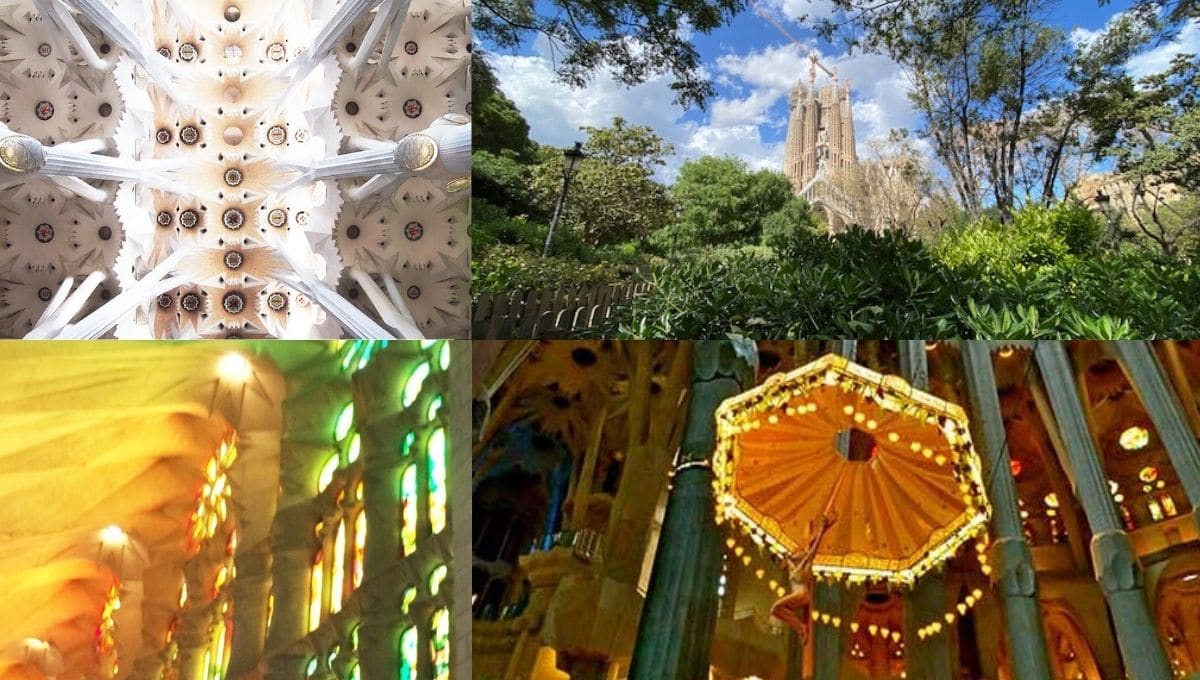
To the question of which visit is a must in Barcelona, the answer that immediately comes to mind is the Sagrada Familia. But beware, even if its exterior is impressive, you should not stop there. Discovering the interior of this masterpiece is not to be missed!
The Sagrada Familia is a building that is absolutely unique in the world. Its striking beauty is well worth spending part of your budget to visit. Its symbolism, abundant light, explosion of colours emanating from its stained glass windows, and its highly informative museum are just some of the reasons why the Sagrada Familia is a must-see when you visit Barcelona.
Even though I have already visited it a good ten times, I am always amazed by the incredible coloured reflections that its magnificent stained glass windows project and scatter on the vault, the floor, and the pillars of the basilica. Not to be missed under any circumstances.
Make sure you book your tickets for the Sagrada Familia online in advance, as it fills up quickly. Avoid late-night slots so as not to be rushed. Take your time to visit it at your own pace.
2- Discover the aquatic world of the Casa Batlló
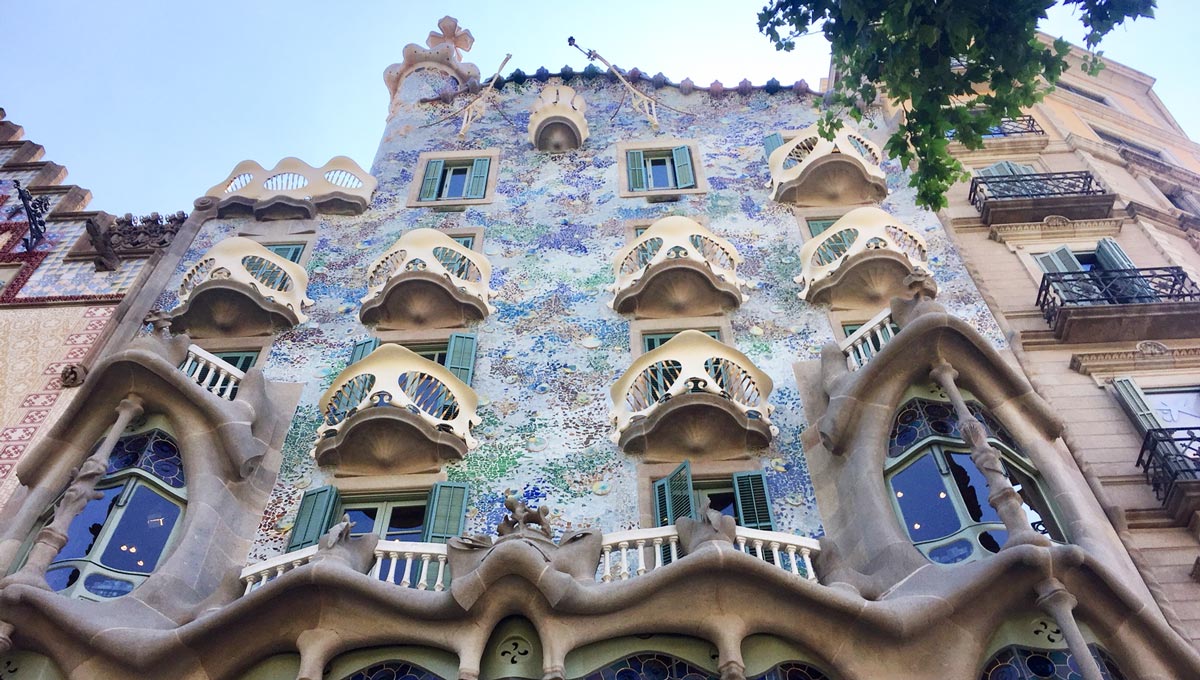
The Casa Batlló looks like something out of a fairy tale. If you have the budget to see it, don’t hesitate! It is a true gem of architecture and engineering that surprises in every corner. Since it was recently restored, it looks stunning and it’s exciting to visit with a new smart guide. It is our favourite Gaudí house in Barcelona.
From one of the house’s landings, the aquatic reflections of its magnificent courtyard can be seen through the frosted glass of the railings of its stunning staircase. Amazing, isn’t it?
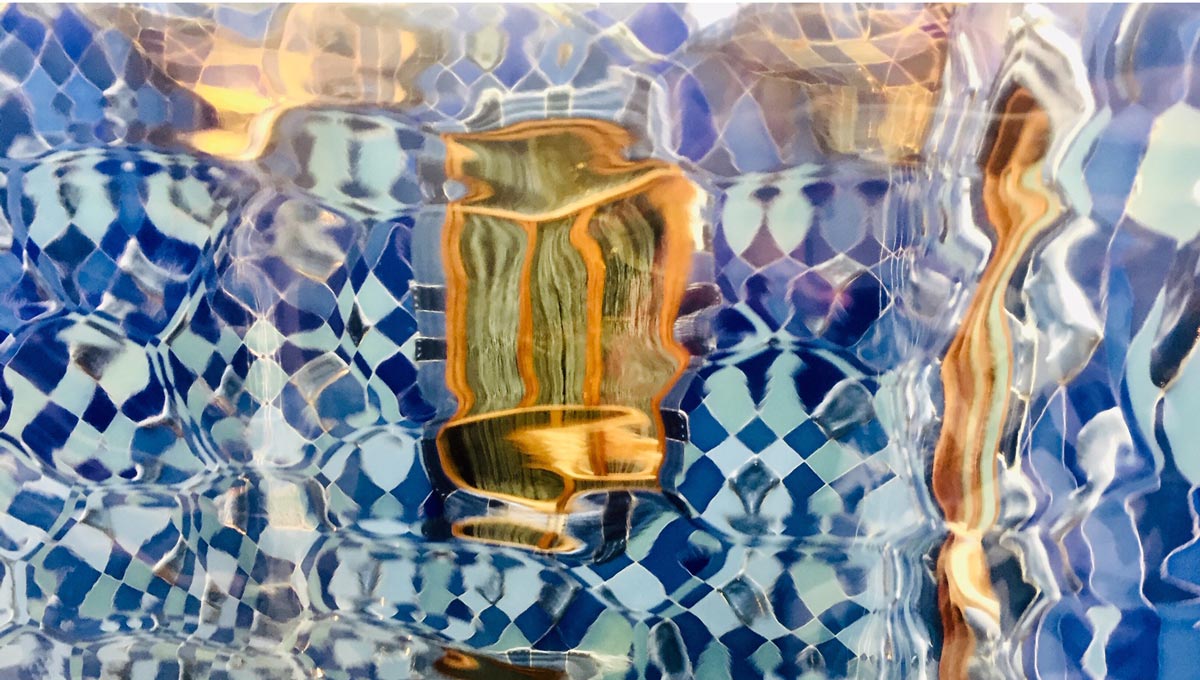
3- Unlocking the secrets of Casa Milà
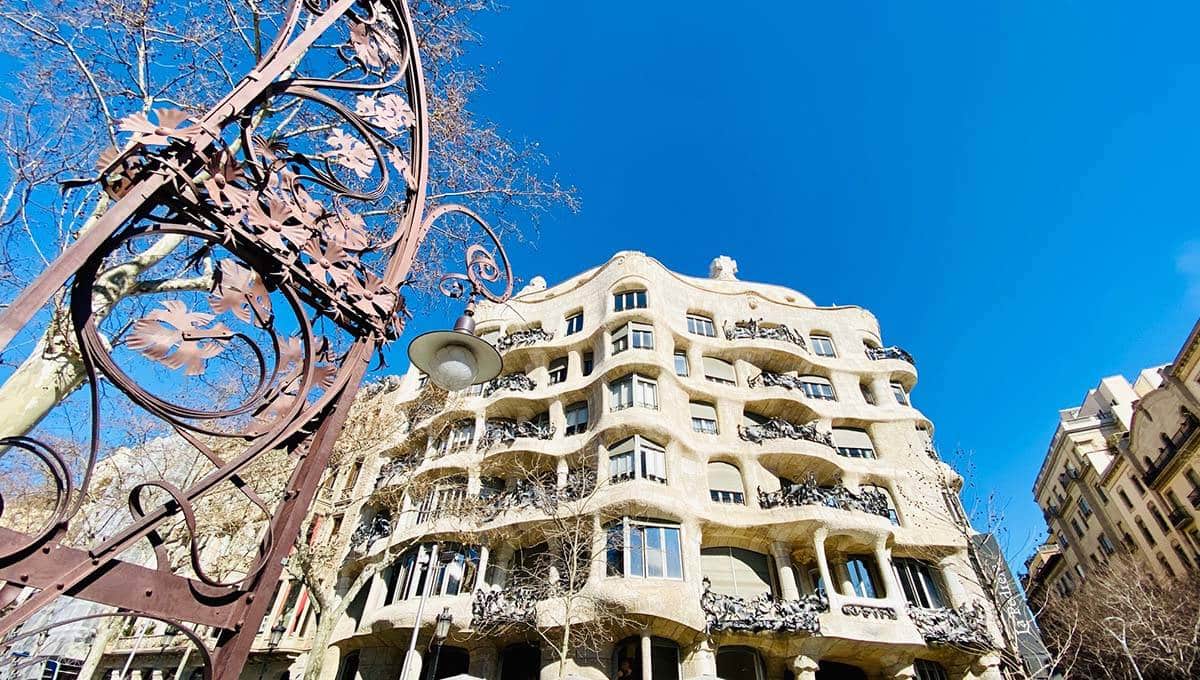
Located a few hundred metres from the Casa Batlló, Gaudí’s famous Pedrera is an undulating building of unparalleled originality. His flat, his roof terrace guarded by chimney-shaped guards, and all the details of this incredible house are really worth a visit.
4- Walking in the Parc Güell
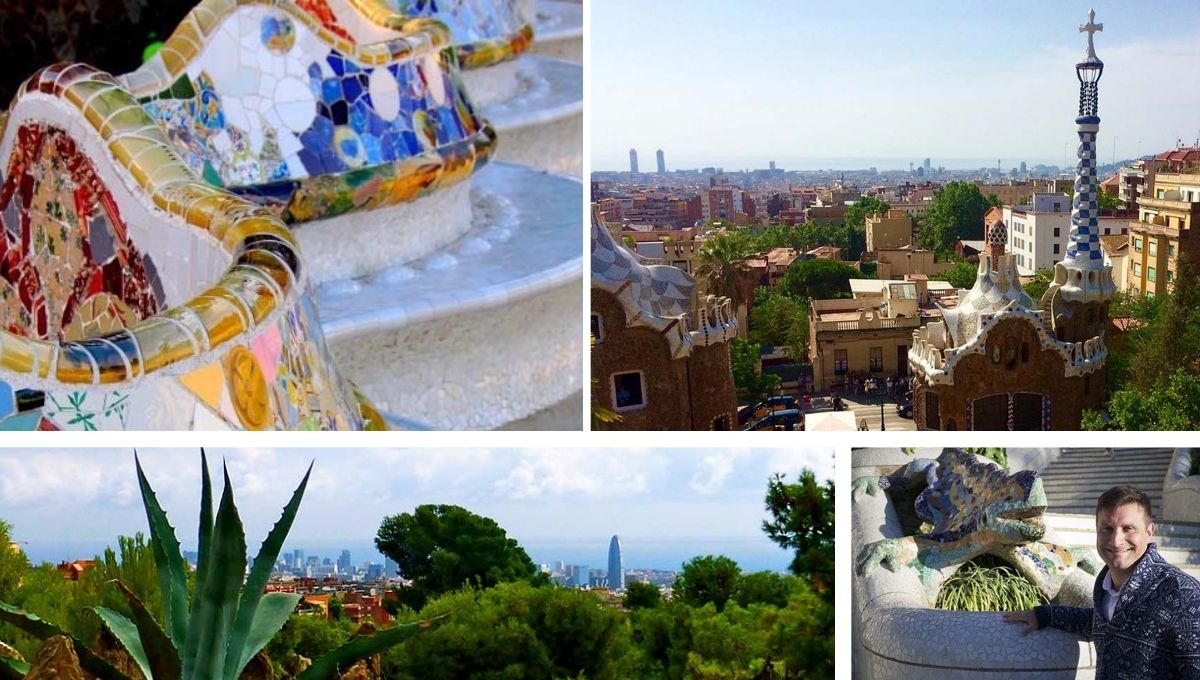
This park, which bears the name of Gaudí’s patron and friend Eusebi Güell, is the result of the collaboration between these two great men. Listed as a UNESCO World Heritage Site, it is, along with the Sagrada Familia, one of the symbols of the city. Its mosaic salamander, its undulating bench, and the breathtaking panoramic view of Barcelona from the heights of the Parc Güell are just some of the reasons to go for a walk.
If you don’t have the budget to visit the monumental part, with paid admission since 2012, take a walk in the free part on the heights of the park. From there, you will have a beautiful view of the park and the city of Barcelona.
On the other hand, if you are in a group and want to treat yourself to a private tour, José, pictured above, a very nice official guide can take you on a 3-hour tour of the Sagrada Familia and the Parc Güell, two must-sees for a first visit to Barcelona.
For those travelling alone, in pairs, or threes, there is also a guided tour in English that combines the Sagrada Familia and Parc Güell.
5- Discover Gaudí’s lesser-known works
Casa Vicens
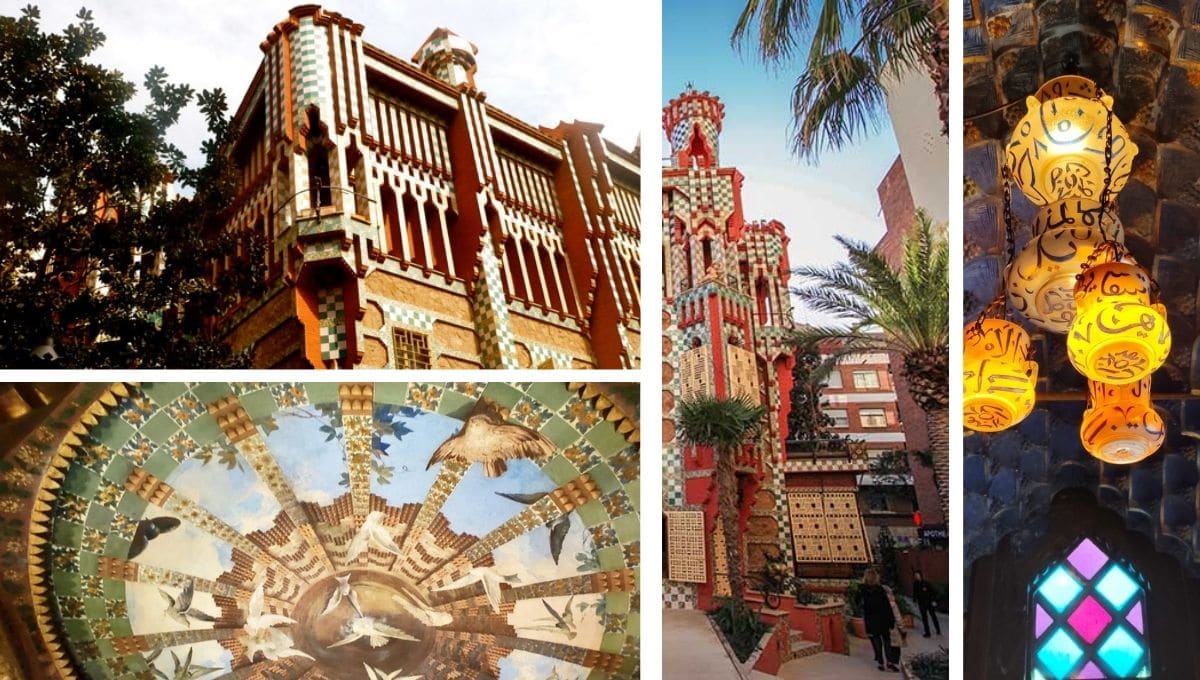
Located in the beautiful district of Gràcia, Casa Vicens is Gaudí’s first architectural project commissioned by Manuel Vicens in 1878. Since 2018, it has been possible to visit this house with Moorish influences.
Visiting these three houses allows you to see the artistic evolution of Gaudí. However, as Casa Vicens is not the most representative of Gaudí’s art, we advise you to book a visit during a second stay rather than during your first.
The Palau Güell
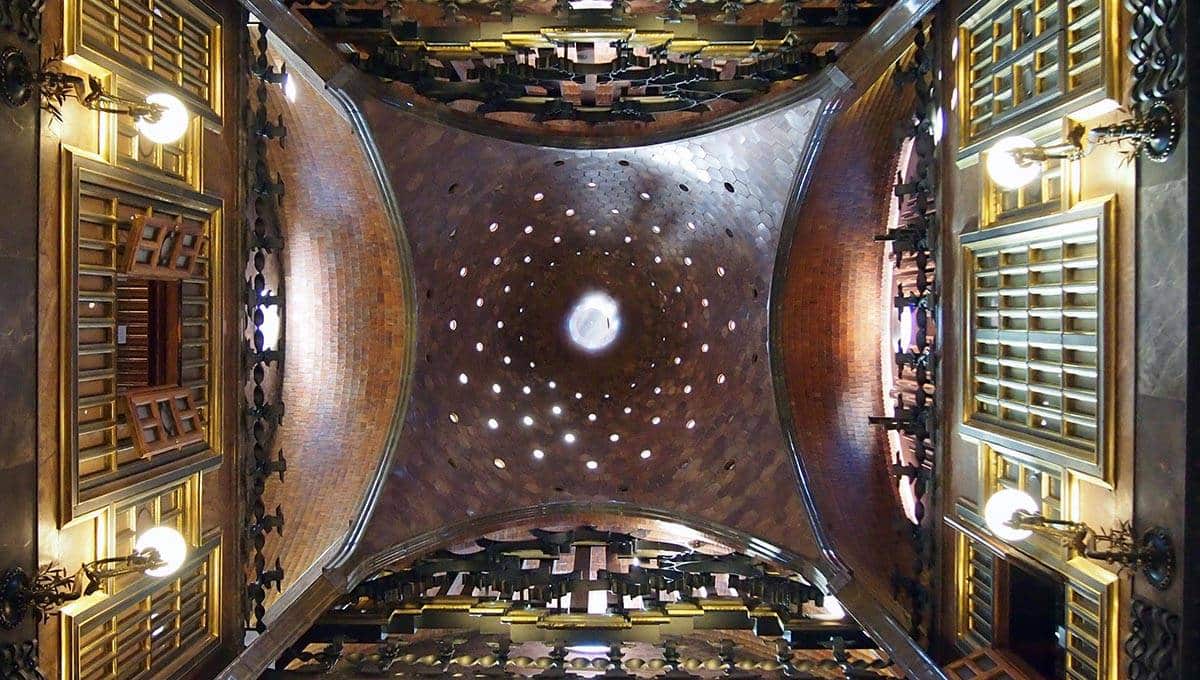
The Palau Güell, located within walking distance of the famous Ramblas, was built between 1886 and 1891 for the wealthy industrialist Eusebi Güell, who was both a close friend and patron of Gaudí. This superb mansion is a Unesco World Heritage Site.
Unlike Gaudí’s other masterpieces, the façade of the Palau Güell is a bit austere. Only go there if you want to visit the interior of this mansion and avoid doing so on a rainy day, as you won’t be able to access its roof terrace.
The Torre Bellesgüard
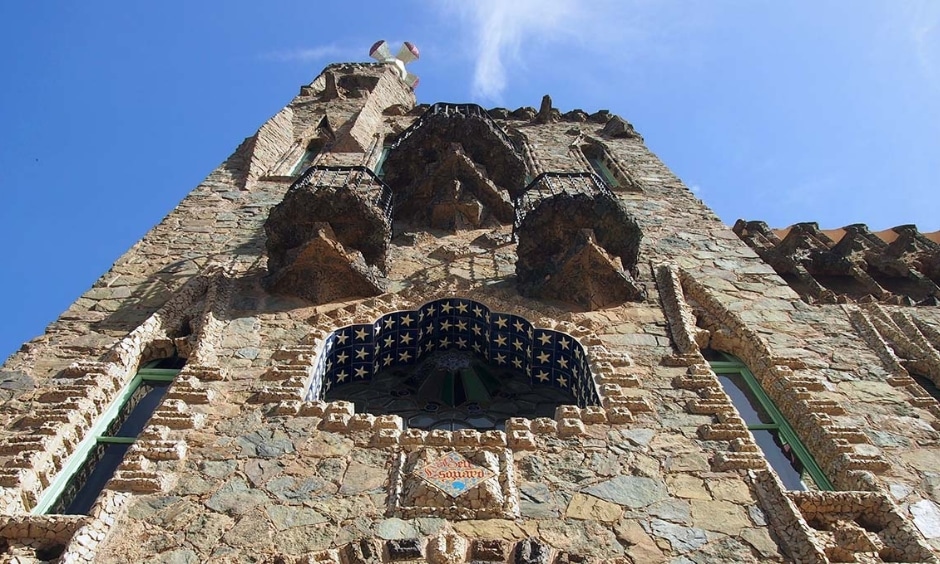
The Torre Bellesguard, which Gaudí built at the very beginning of the 20th century, is a well-kept treasure in Barcelona. Since September 2013 it has been possible to visit a large part of the building (the other part is still inhabited).
This off-the-beaten track visit will appeal to Gaudí’s fans who would like to see another side of the artist’s work.
Visit other Art Nouveau masterpieces
6- Palau de la Música
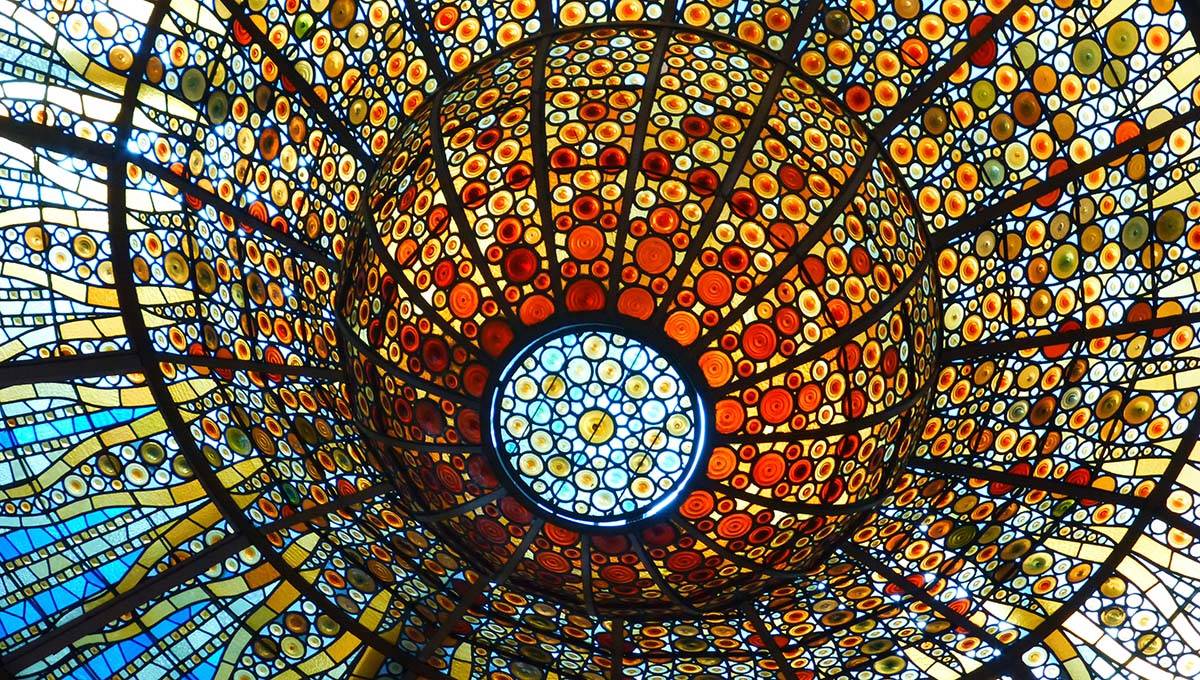
Another renowned architect, Domènech i Montaner, marked Barcelona’s DNA in the early 20th century. The Palau de la Música Catalana (Palace of Catalan Music) is the product of his genius. It is also one of the most beautiful concert halls in the world.
Don’t miss out on a visit to this breathtakingly rich architectural masterpiece. After the Sagrada Familia, this is one of our favourite places to visit in Barcelona!
7- Sant Pau Hospital
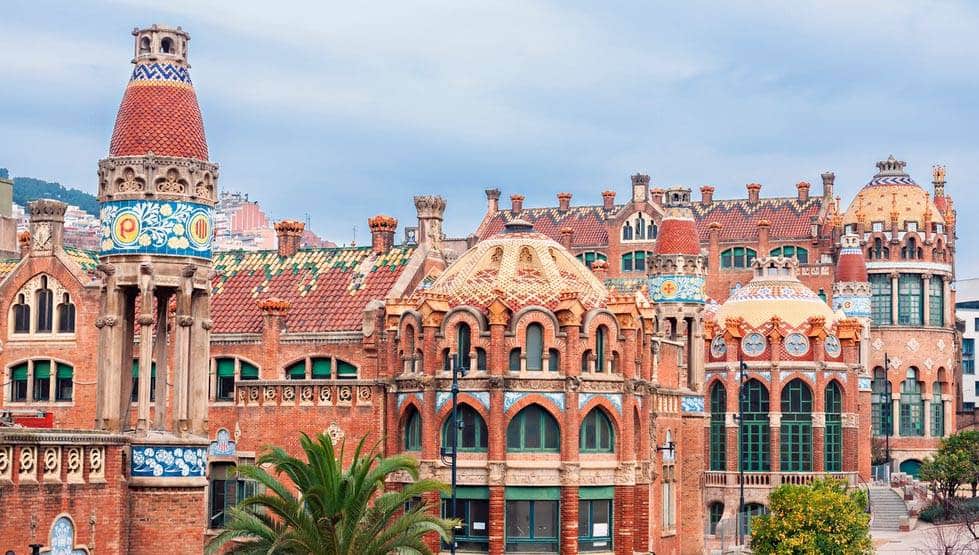
The Sant Pau Hospital, another masterpiece by Domènech i Montaner, is the largest Modernist architectural complex in Europe.
Before or after you visit to the Sagrada Familia, head to this former hospital with its amazing and innovative architecture, located just a 12-minute walk from Gaudí’s great masterpiece.
8- Casa Amatller
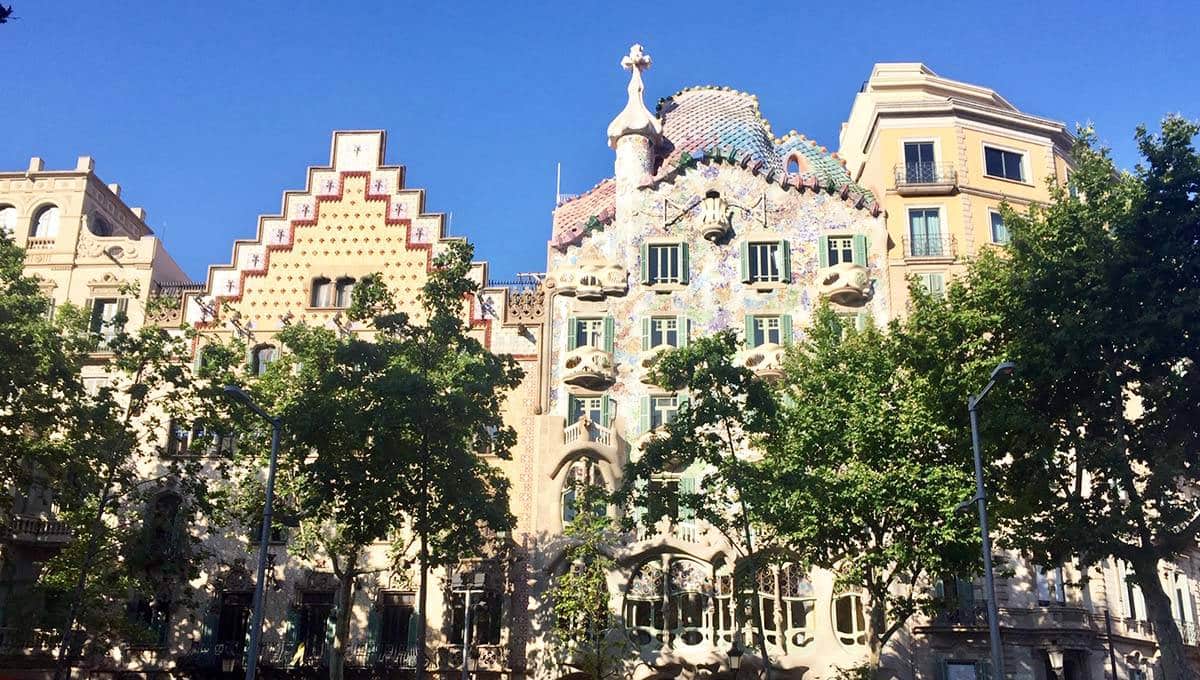
On the Passeig de Gràcia, the pretty Casa Amatller is next door to the famous Casa Batlló, which admittedly overshadows it a little. But it deserves to be seen as well.
The architect Puig i Cadafalch, a contemporary of Gaudí, renovated and transformed the house of Antoni Amatller, a chocolate maker of the time. The house was transformed from a neoclassical style to a more daring Art Nouveau style.
You can visit it and afterwards enjoy a nice hot chocolate in its pretty cafeteria on the ground floor (its covered terrace is my favourite place). A moment of pure pleasure!
Visiting Barcelona’s emblematic districts and places
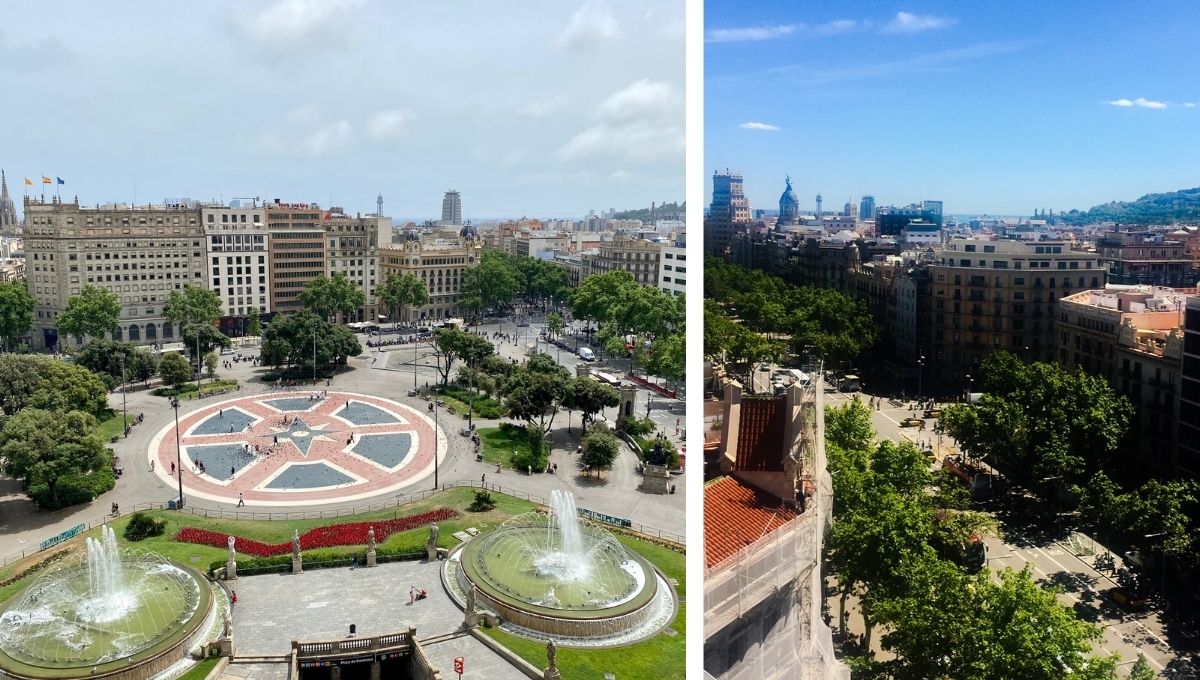
9- Plaça de Catalunya
Plaça de Catalunya is the nerve centre of Barcelona. It is also the intersection of many metros, bus, train, and ferrocarril lines and the departure point of the Aerobus, a shuttle bus that takes you to Barcelona airport in half an hour.
This large square with a few fountains is the starting point for many visits. If you’re more of a shopping fan, many shopping centres and shops surround the square (Corte Inglés, El Triangle, Fnac, Apple Store, etc).
Plaça de Catalunya is within walking distance of Las Ramblas, the Gothic Quarter, the Raval, Plaça de la Universitat, and Passeig de Gràcia.
10- Passeig de Gràcia
The Passeig de Gràcia, which in its early days was only a path bordered by gardens linking the village of Gràcia to the walled city of Barcelona, is now a very fashionable artery that connects the Gràcia district, now an integral part of the city, with the Plaça de Catalunya in the heart of Barcelona.
Less well known than the famous Ramblas, the Passeig de Gràcia is one of Barcelona’s most emblematic and elegant avenues. Here, architectural marvels, luxury hotels and beautiful boutiques rub shoulders.
I would recommend walking along its wide pavements, lined with cobblestones designed by Gaudí for the floors of La Pedrera, and looking up from time to time to contemplate the magnificent buildings that border the promenade.
11- Las Ramblas
You’ve probably heard of Barcelona’s famous Ramblas, the promenade that connects Plaça de Catalunya to the statue of Christopher Columbus near the port.
Las Ramblas are one of Barcelona’s must-see places, even though they have lost their authenticity because of the crowds of tourists and a few pickpockets who walk along them in the high season. It is worth visiting at least once, but in our opinion, there is no need to linger too long.

The Ramblas separate two districts of the old town: the Gothic and the Raval, which we introduce below.
12- The Gothic Quarter
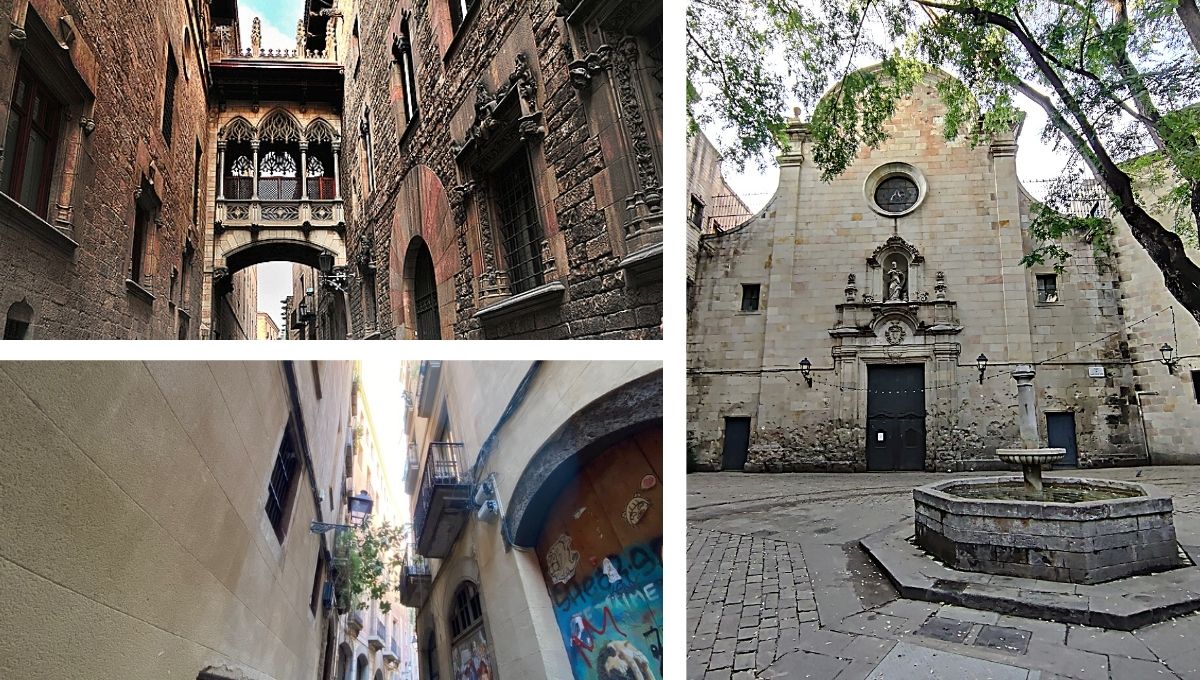
Would you like to discover small shady squares nestled between old medieval churches, century-old shops, and typical tapas bars? This is the setting for the Gothic Quarter. A stroll through its narrow streets is a real escape from time.
Don’t miss out on this historic district: the Barcelona Cathedral, the Plaça Reial, the Plaça Sant Jaume, the Plaça del Pí and the Barcelona History Museum.
13- El Raval
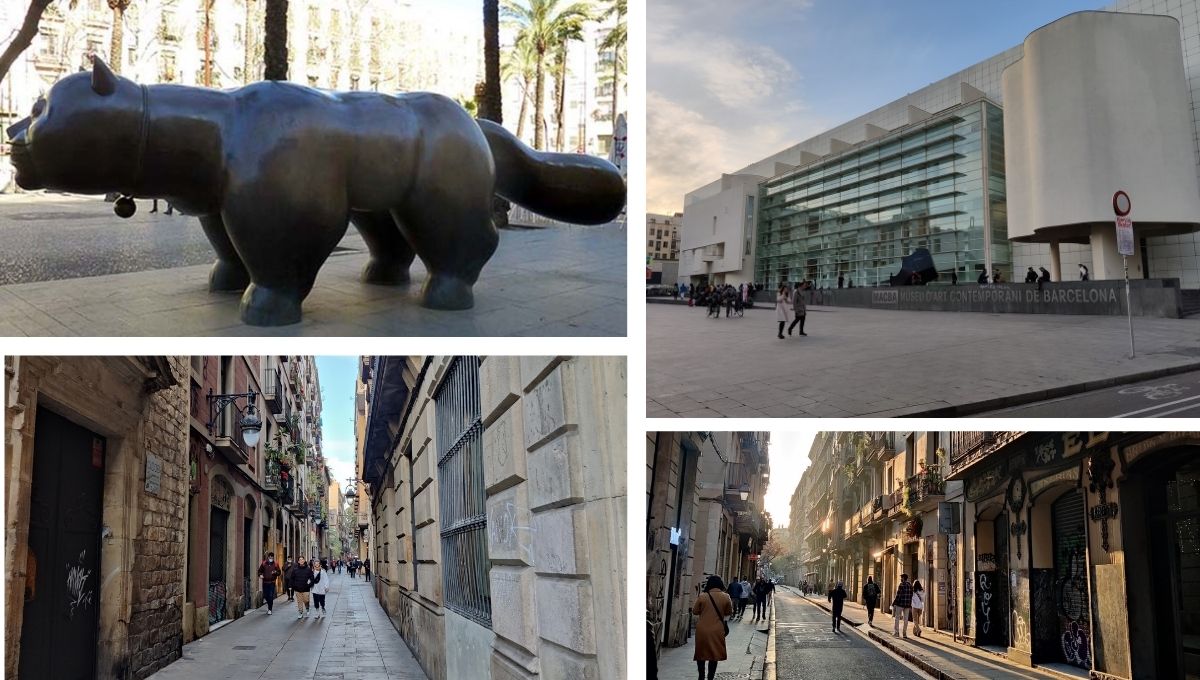
El Raval is the most multicultural area of Barcelona’s historic centre. It is also an alternative district full of vintage shops and original places.
This lively nightlife area is not the safest in the city, so please be careful when walking through its alleys. We do not recommend venturing out alone at night.
- El Raval is also home to museums and cultural centres of interest such as the MACBA, the CCCB, Gaudí’s Palau Güell, the Maritime Museum, and the Virreina Image Centre,
- La Boquería is the most touristy and photogenic market in Barcelona.
14- El Born
The Born looks like the Gothic Quarter. However, it has a different charm, probably due to its more tree-lined and slightly wider streets. Tell us which one you prefer!
- Don’t miss the peaceful atmosphere of its small squares, the Picasso Museum, the recently opened MOCO contemporary museum, the Santa Caterina market, the magnificent Palau de la Música and the beautiful Santa María del Mar church.
15- Parc de la Ciutadella
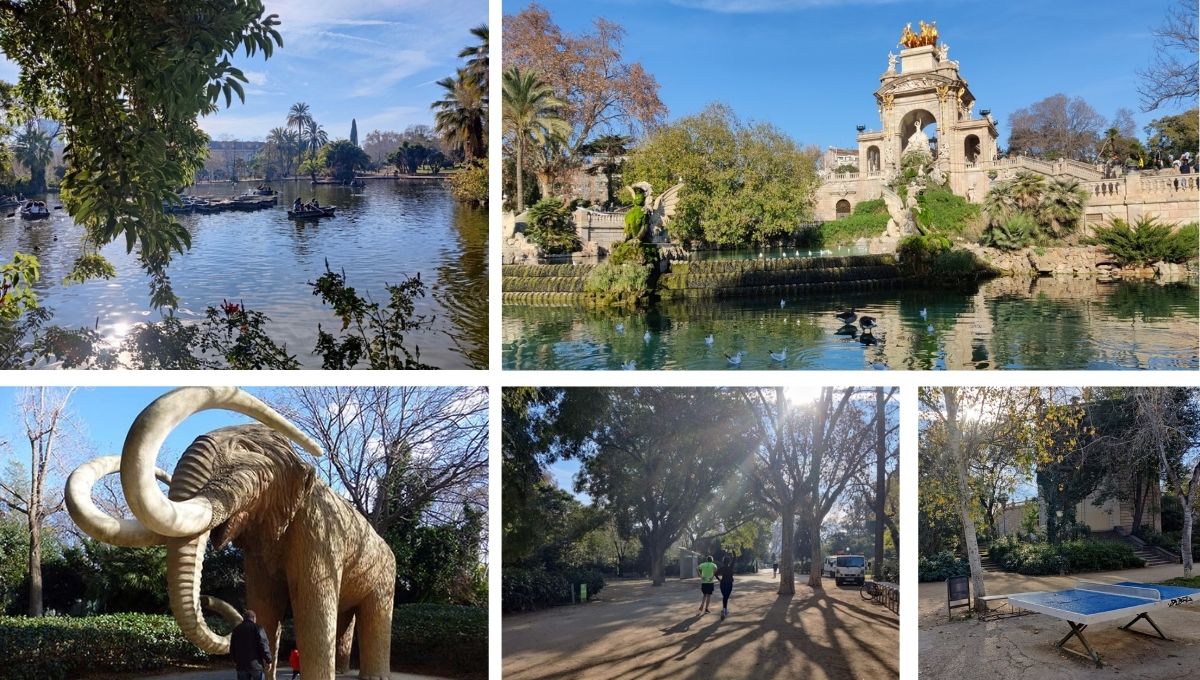
The Parc de la Ciutadella is the first public park in Barcelona. Created at the end of the 19th century, this beautiful green space is home to an impressive waterfall, a hundred-year-old trees, museums, a lake where you can take a boat ride, and the Barcelona Zoo.
16- Gràcia
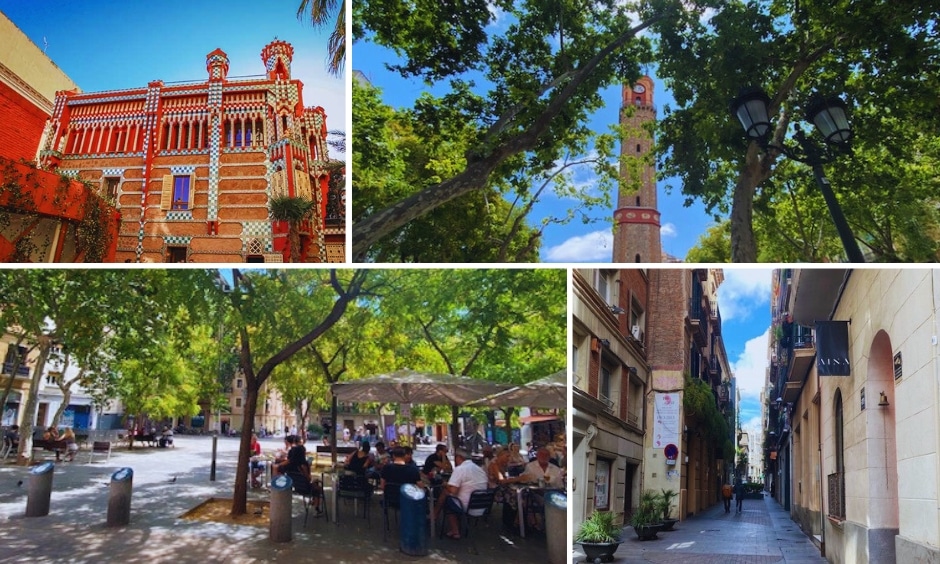
The Gràcia district, located halfway between the Parc Güell and Barcelona city centre, was still a village a few decades ago. Far from the tourist hustle and bustle of the city centre, its narrow tree-lined streets, small shops, and pretty squares have retained a picturesque village charm.
Art cinemas, open-air cafés, organic shops, and original boutiques are pleasant alternatives for relaxing moments in this pretty neighbourhood.
17- Eixample
The Eixample is a district of Barcelona designed by the engineer and town planner Ildefons Cerdà and built at the end of the 19th century and the beginning of the 20th. Its central part, the Eixample Dret, is the district where Art Nouveau acquired its letters of nobility.
The Eixample is divided into six districts: the Dreta de l’Eixample, the Antiga Esquerra de l’Eixample, the Nova Esquerra de l’Eixample, Fort Pienc, the Sagrada Família, and Sant Antoni.
While walking through the Eixample district, don’t miss the magnificent stained glass windows of modernist buildings on either side of the Passeig de Gràcia. The walk in the footsteps of Catalan Art Nouveau that we propose in this article will allow you to discover several beautiful ones.
18- The Port of Barcelona
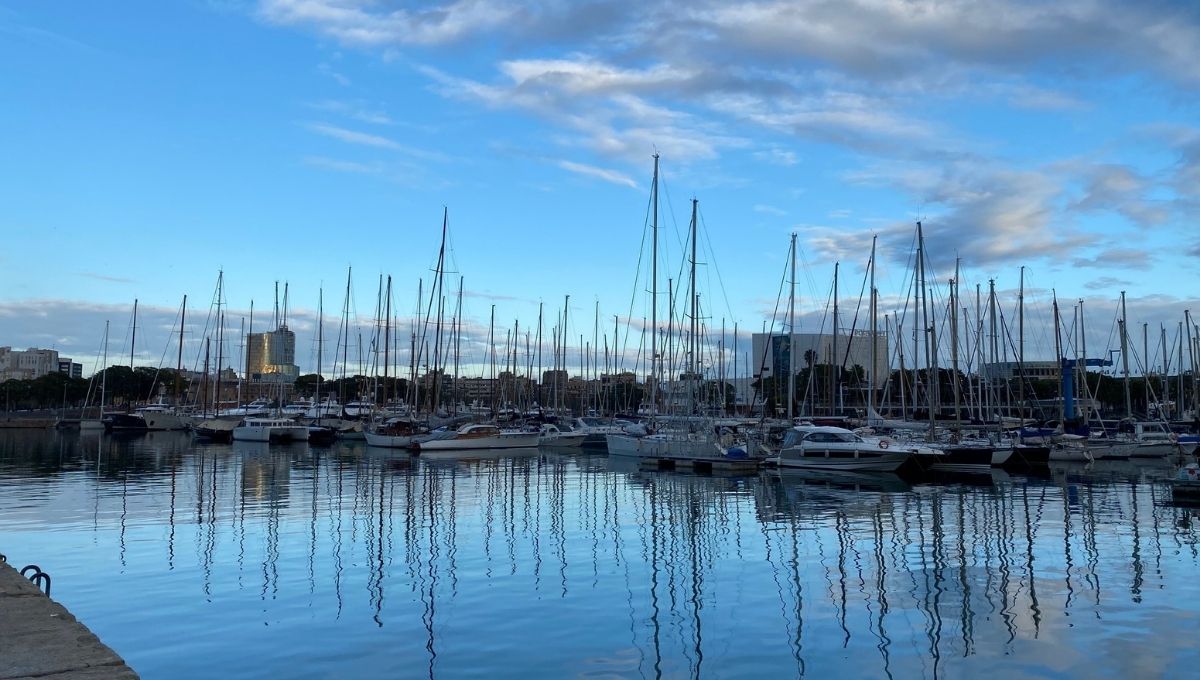
It is easy to forget that Barcelona is a port city when you wander through the streets of the historic centre, given the striking contrast.
The port of Barcelona is divided into different areas. If you arrive in the Catalan capital by boat, you will disembark in the cruise area.
From the Montjuïc castle, you have a beautiful view of the commercial area of the port.
But there’s nothing like a little walk in my favourite port area (see photo above), the Port Vell (old port in Catalan), to admire the beautiful light that plays between the pretty boats moored there.
19- La Barceloneta
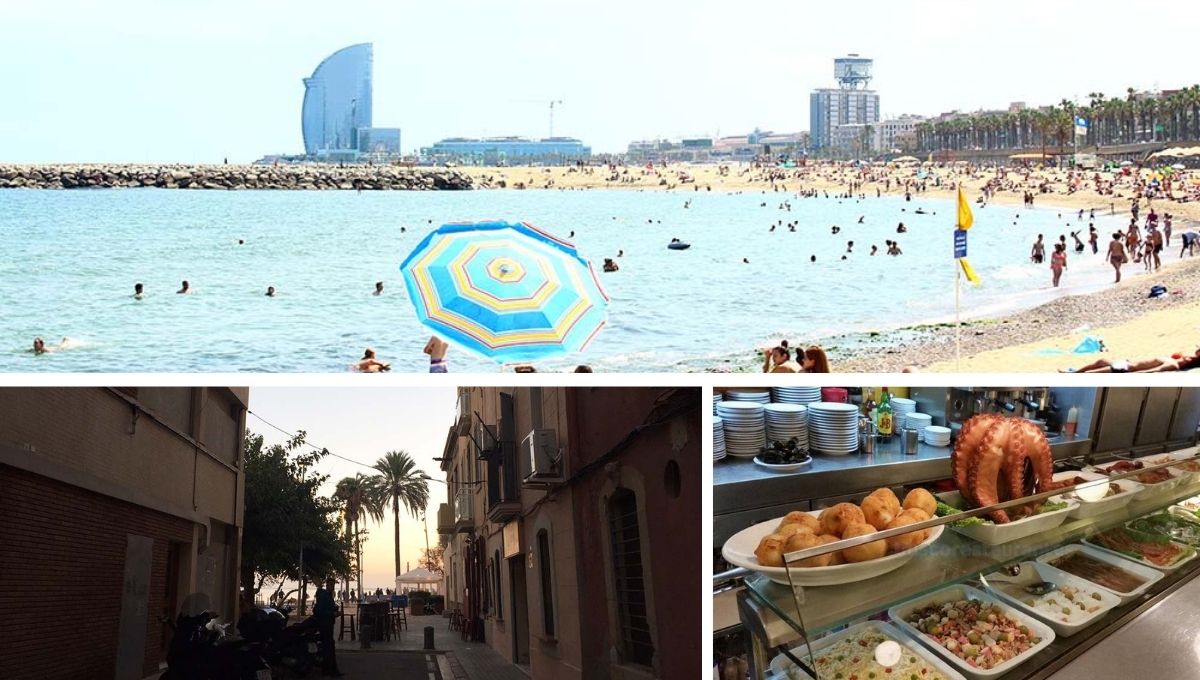
La Barceloneta is an area of Barcelona with Mediterranean charm that has the privilege of combining large beaches and small, typical, lively streets for a striking contrast.
In this old fishing village, you can stroll through the narrow streets at any time of the day and taste local dishes in typical and authentic bars.
At the end of some of the alleys, you can sometimes catch a glimpse of the pretty silhouette of a seaside palm tree. Pleasure and a change of scenery guaranteed!
20- Passeig Marítim
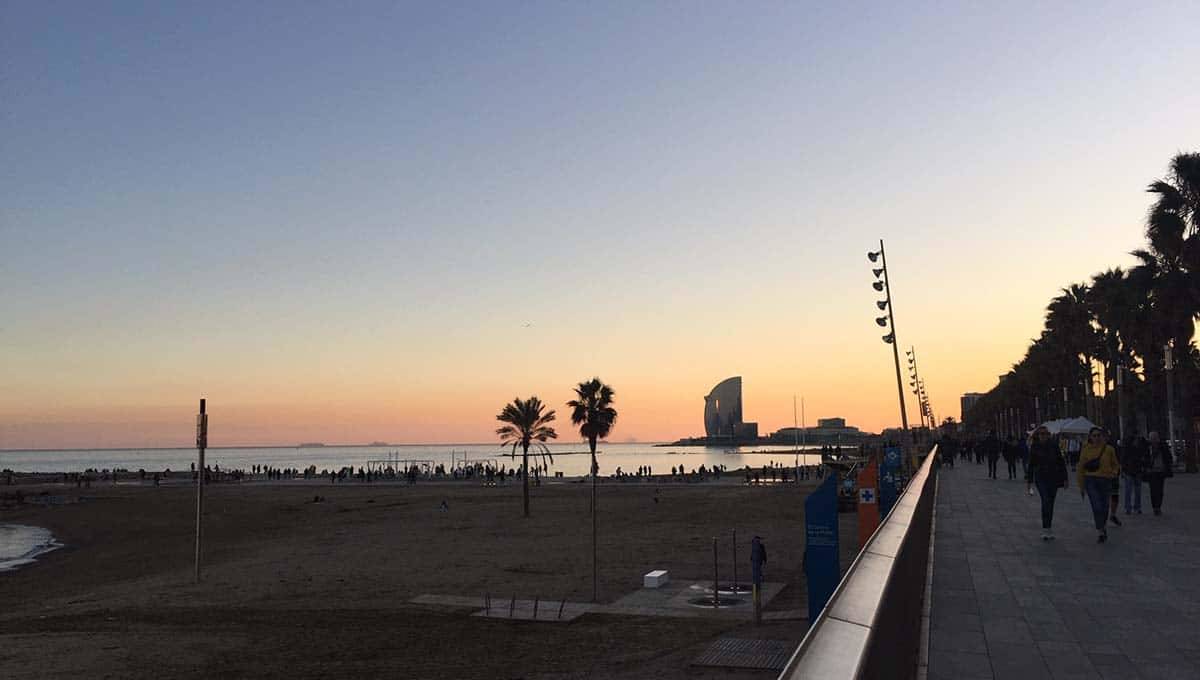
If you want to feel like you’re really on holiday, I suggest you take a stroll along the Passeig Marítim, a long seafront promenade where all your senses will be awakened. Of course, you will not be the only one to have this idea, but despite the summer or Sunday crowds, the atmosphere is relaxed and there is room for everyone: swimmers, cyclists, walkers, or sports enthusiasts.
A beautiful moment of relaxation, especially at sunset!
21- Poblenou
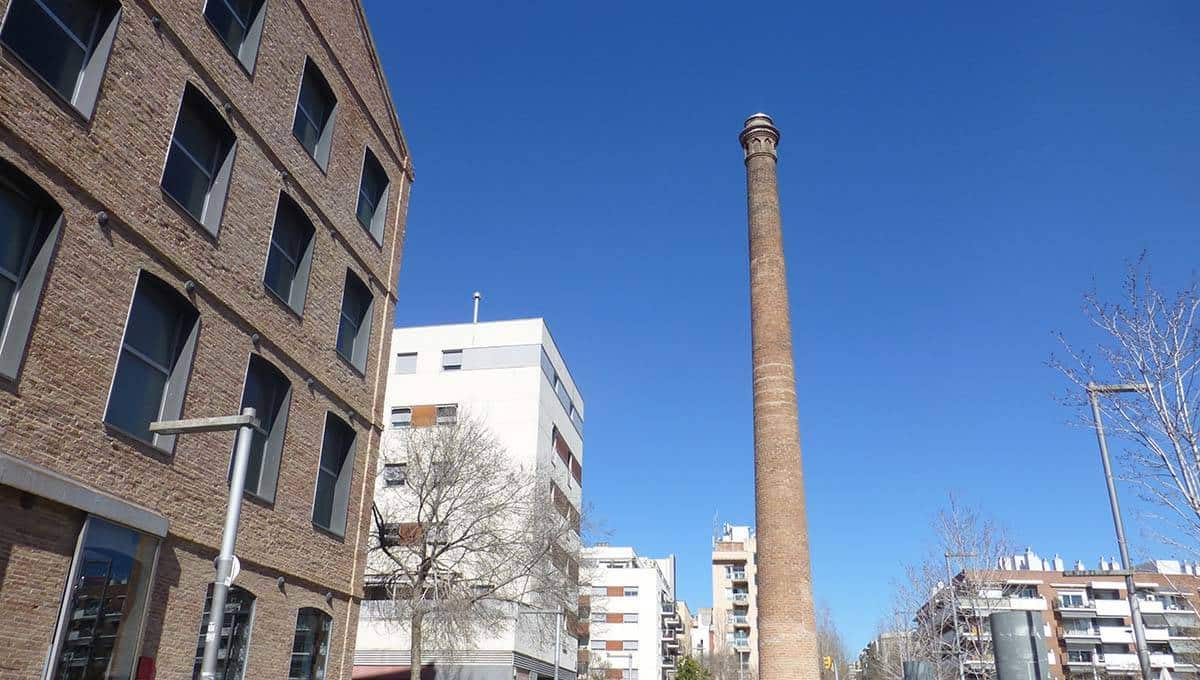
A former industrial district, Poblenou is currently undergoing a major transformation. Many design, fashion and architecture schools are located there, which helps attract a young and trendy public to the area.
Remote, quiet, and avant-garde, the Poblenou district has many interesting assets for a tourist stay: among others, the proximity of the Razzmatazz night club and the beautiful Bogatell beach.
22- Montjuïc
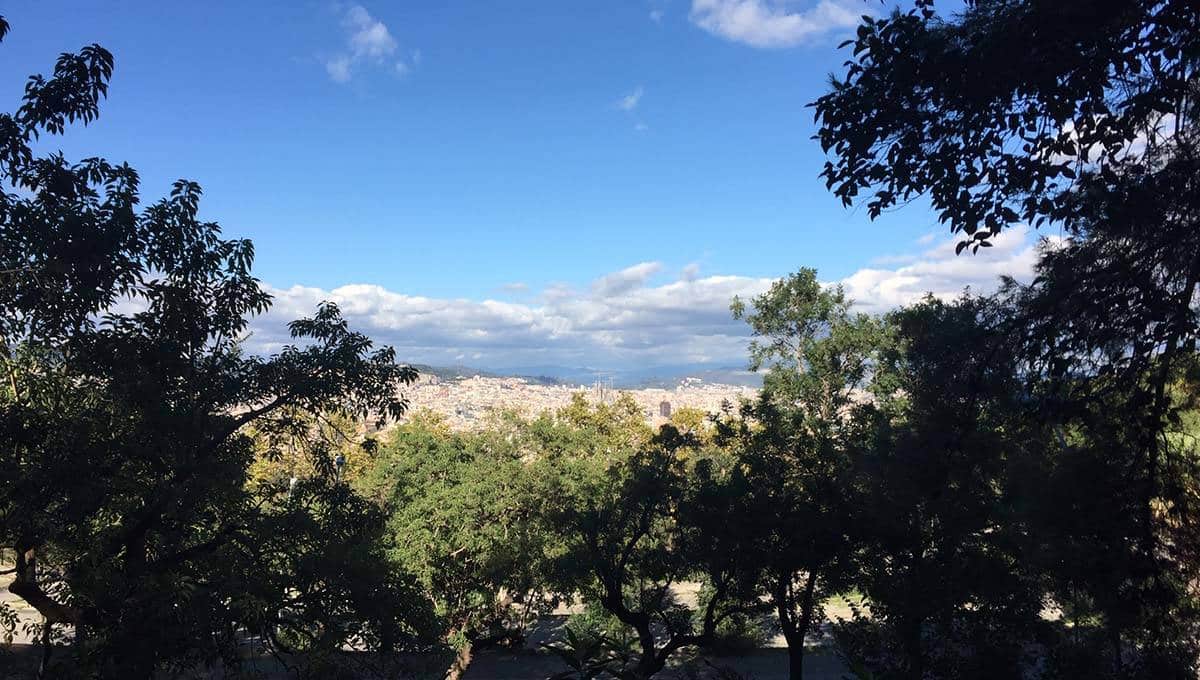
Montjuïc is the green lung of Barcelona. This beautiful hill overlooking the city is a paradise for sports enthusiasts, culture lovers, and those who like to relax.
A must-see if you want to enjoy its magnificent parks and sports facilities while admiring the beautiful views from its heights.
The Magic Fountain
With the beautiful Museu Nacional d’Art de Catalunya in the background, the marvellous sound and light show at the magic fountain of Montjuïc is one of the favourite attractions for families visiting Barcelona.
Unfortunately, they have not yet resumed their activity since the covid-19 pandemic. Let’s hope they reopen as soon as possible.
Visiting Barcelona’s museums and foundations
23- Picasso Museum
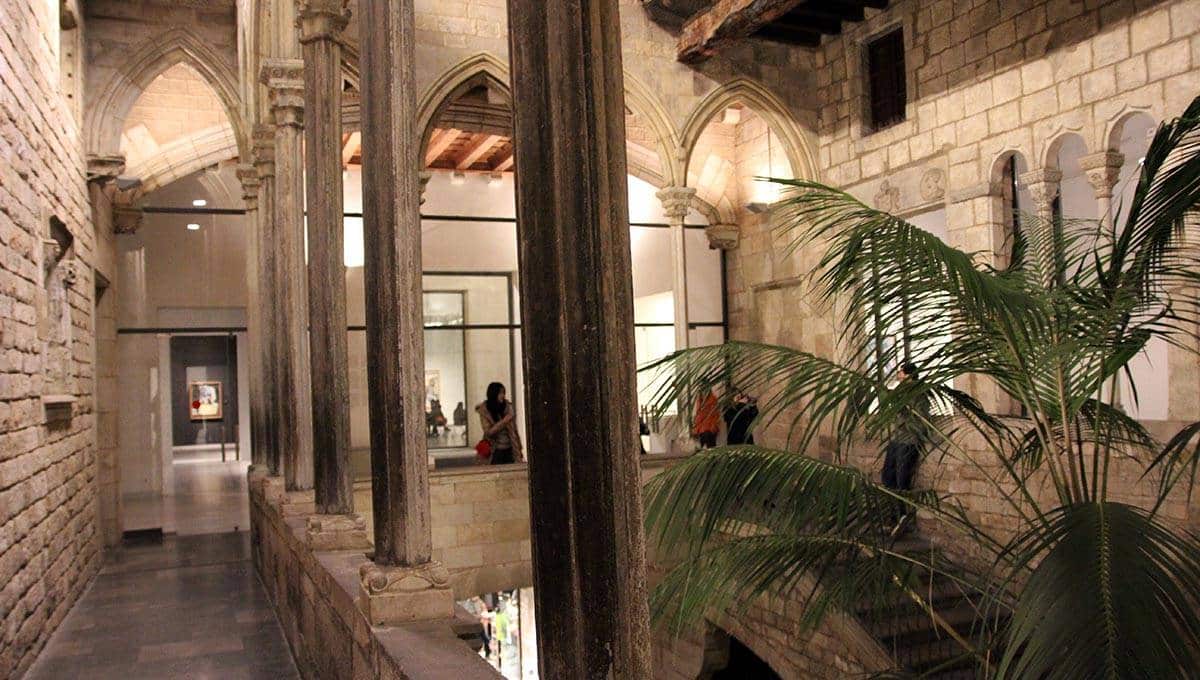
Housed in magnificent gothic palaces, the Picasso Museum has more than 3,500 unpublished works by the famous painter.
Make sure you book your ticket online to avoid the queue. It is the most visited art museum in Barcelona.
24- Miró Foundation
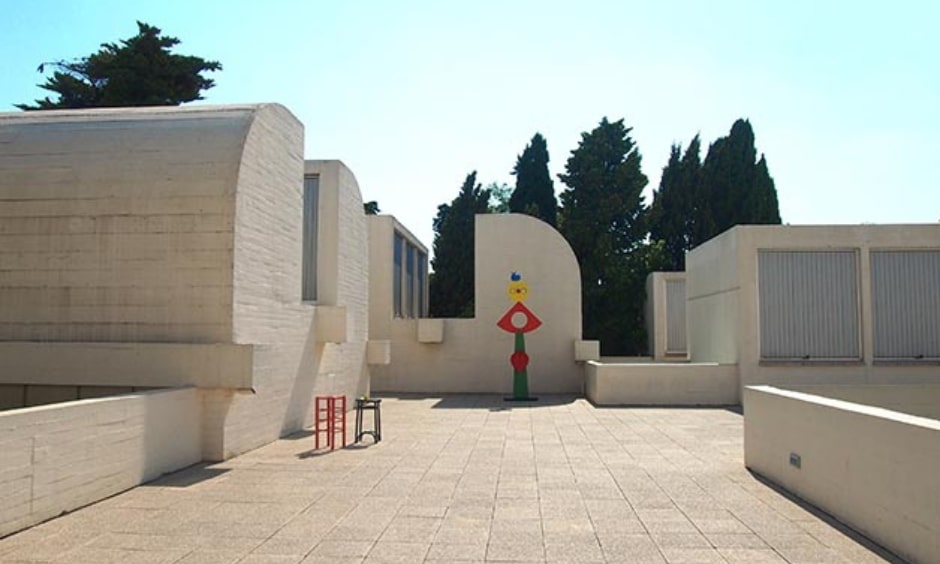
Located on Montjuïc hill, the Miró Foundation houses a vast collection of works by this Barcelona artist in a beautiful building with contemporary architecture.
Before or after the visit, take advantage of its privileged location to discover Montjuïc hill, its castle, its sports facilities and its many green spaces.
25- MACBA (Barcelona Museum of Contemporary Art)
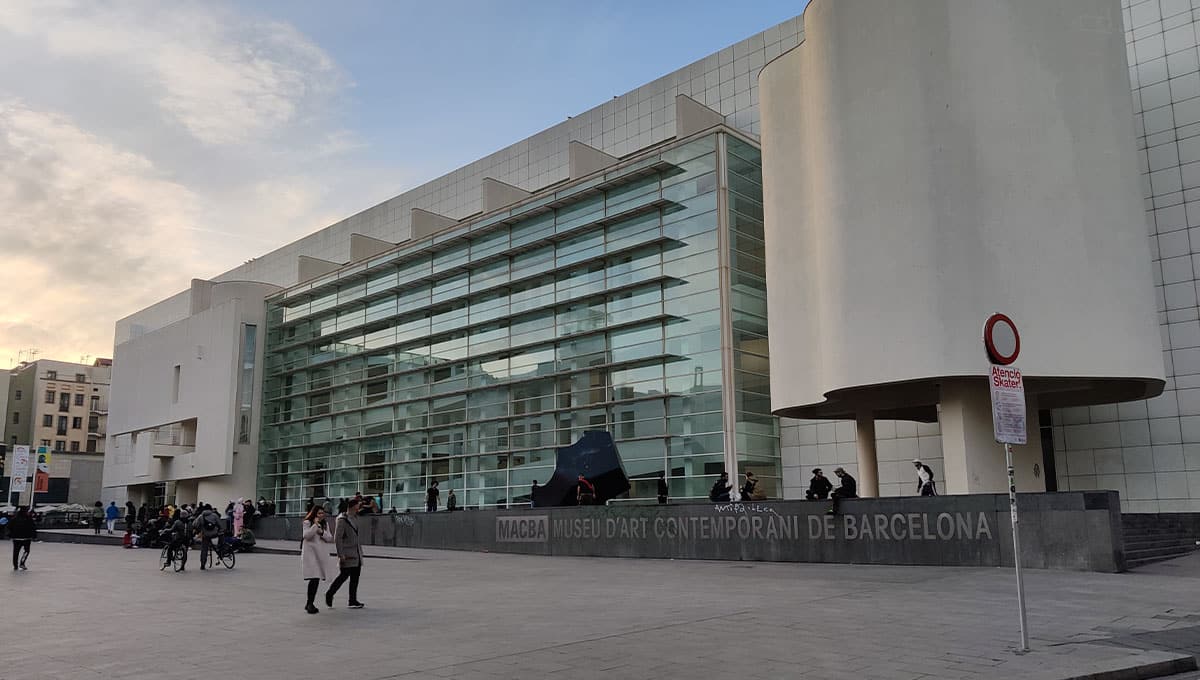
Opened in 1995, MACBA is a big, bold and different museum that is well worth a visit if you like contemporary art.
This huge, immaculately white building with its clean lines is a space where light is the protagonist. You can admire temporary exhibitions that are truly off the beaten track and that allow you to (re)discover well-known or emerging artists.
26- MOCO
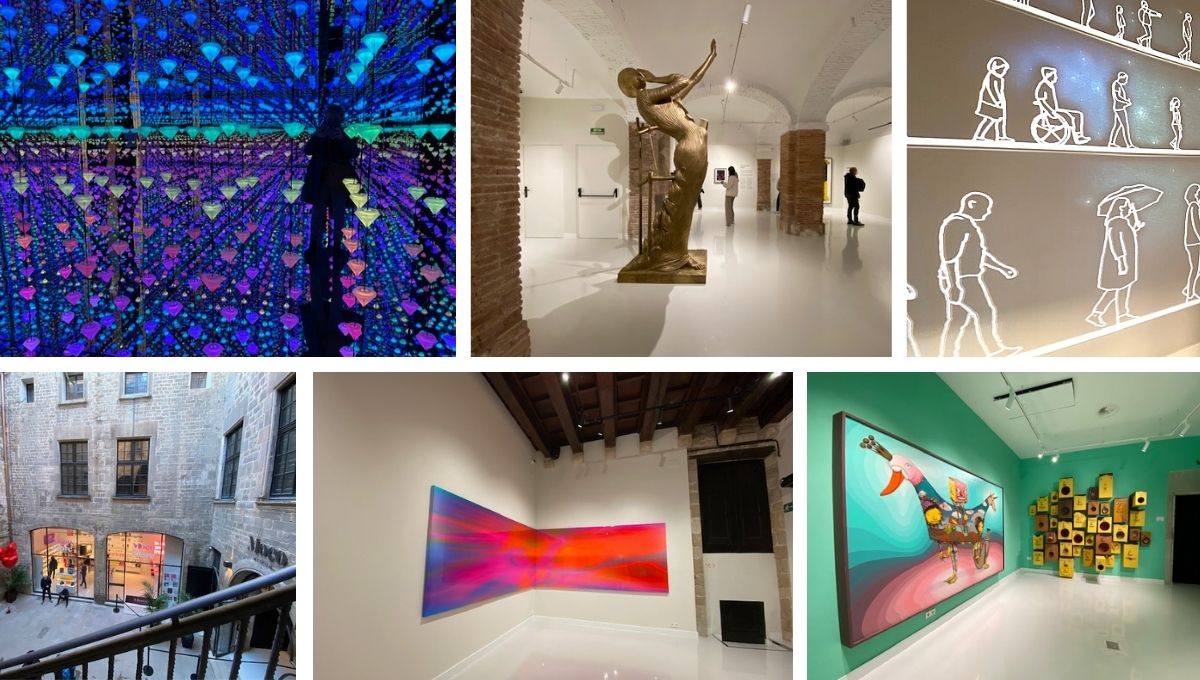
The Moco museum is a brand new contemporary art museum in Barcelona that opened in October 2021. It is the sister museum of the same name in Amsterdam and neighbour of the Picasso Museum. Like the latter, it is housed in a magnificent 16th century palace.
Works by Dalí, Banksy, Warhol, Basquiat, Keith Haring, KAWS, and Yayoi Kusama, as well as lesser-known but equally talented artists, are spread throughout the museum.
- I was particularly taken by the poetry of the digital rooms and the positive messages of this museum, which convey the idea that art has unlimited power and that if we allow ourselves to be guided by empathy and the importance of the collective, we will all emerge stronger.
27- MNAC (National Museum of Catalan Art)
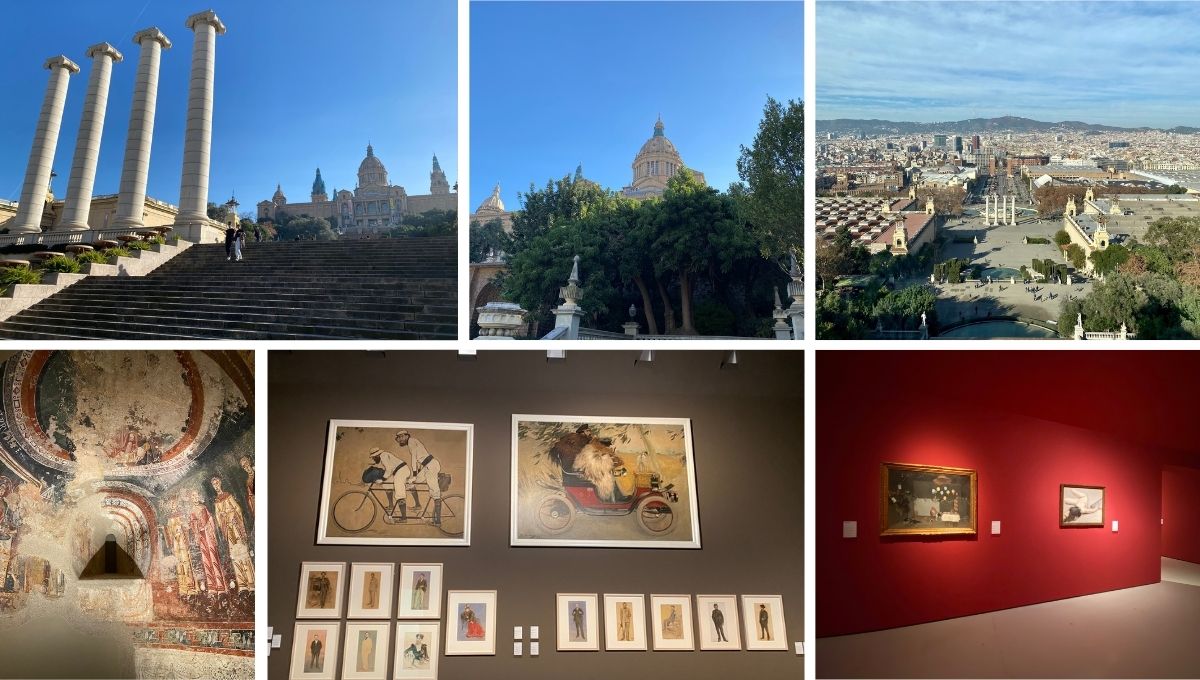
The National Museum of Catalan Art (MNAC) is housed in a magnificent palace at the bottom of Montjuïc hill.
It exhibits paintings, frescoes, and sculptures dating from the 11th to the 20th century and thus offers a magnificent journey through Catalan art over the centuries.
- Its terrace offers a 360º panorama of Barcelona, so don’t hesitate to go and have a look.
28- CaixaForum
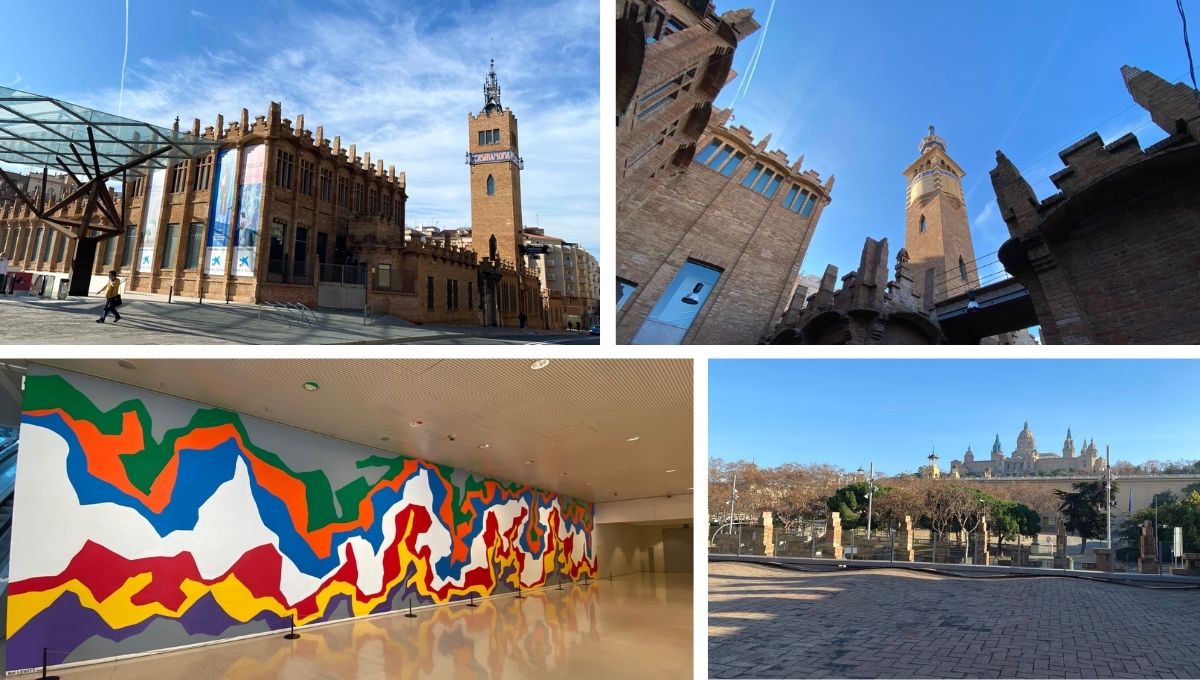
CaixaForum is an art and culture centre housed in a former textile factory designed by the architect Puig i Cadafalch, one of the great figures of Catalan Art Nouveau, like Domenech i Montaner and Gaudí.
This beautiful building hosts several exhibitions throughout the year, covering various areas such as painting, architecture, photography, cinema, and classical, modern, and contemporary art.
- To be honest, I have a soft spot for this beautiful and welcoming space, whose selection of exhibitions is always interesting and relevant. The only problem? The explanations are often in Spanish and Catalan only.
29- CosmoCaixa
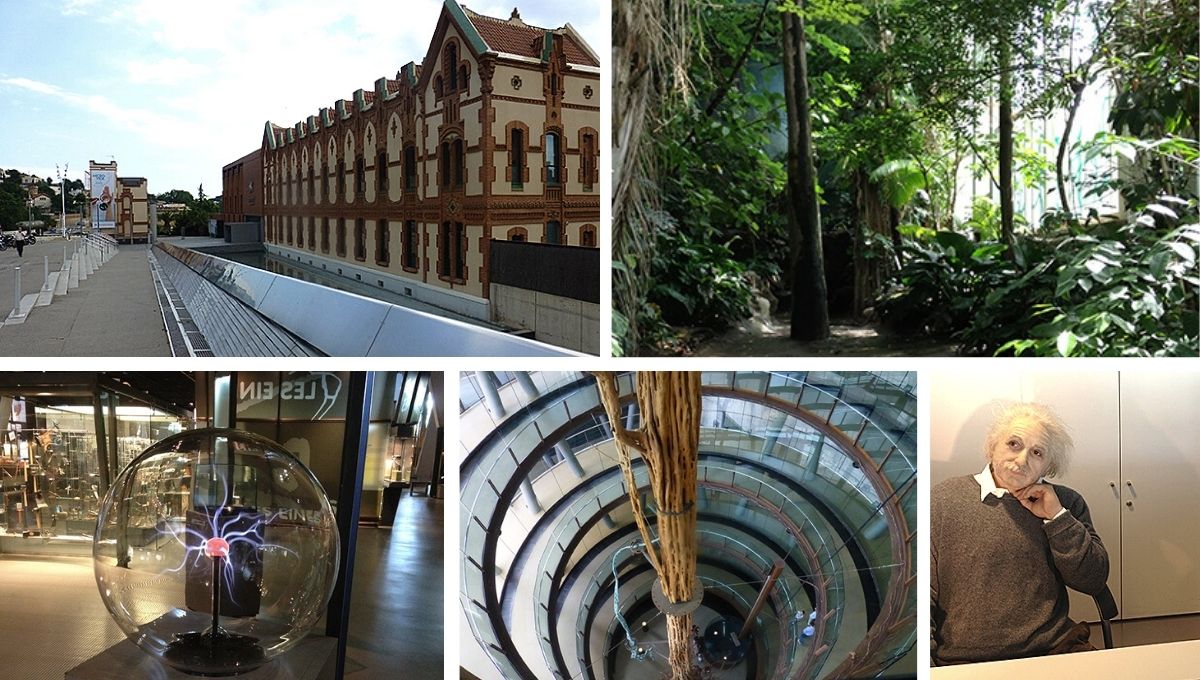
CosmoCaixa is Barcelona’s science museum. This beautiful space aims to awaken the scientific spirit of everyone through various activities. A little remote, it allows you to get off the beaten track while spending a pleasant moment in its planetarium or its flooded forest.
30- FC Barcelona Museum and Stadium
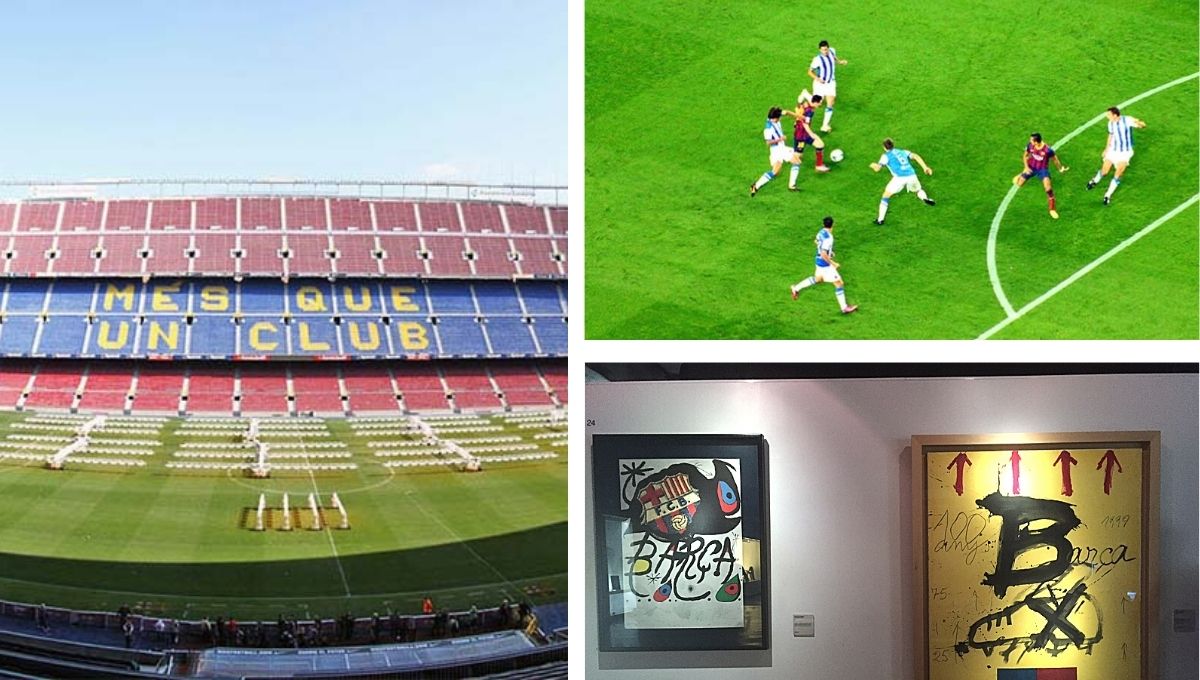
Will you be surprised to learn that the Camp Nou Museum is one of the most visited museums in Barcelona?
If you are a fan of FC Barcelona or if you want to see the green stadium up close, go to the Les Corts district to discover this temple of football where the best players in the world come and go in the Barça team.

Book your ticket for the FC Barcelona Museum online and do not choose a match day, as you will not be able to access the stadium which is closed to visitors at these times.
31- The Barcelona Maritime Museum (MMB)
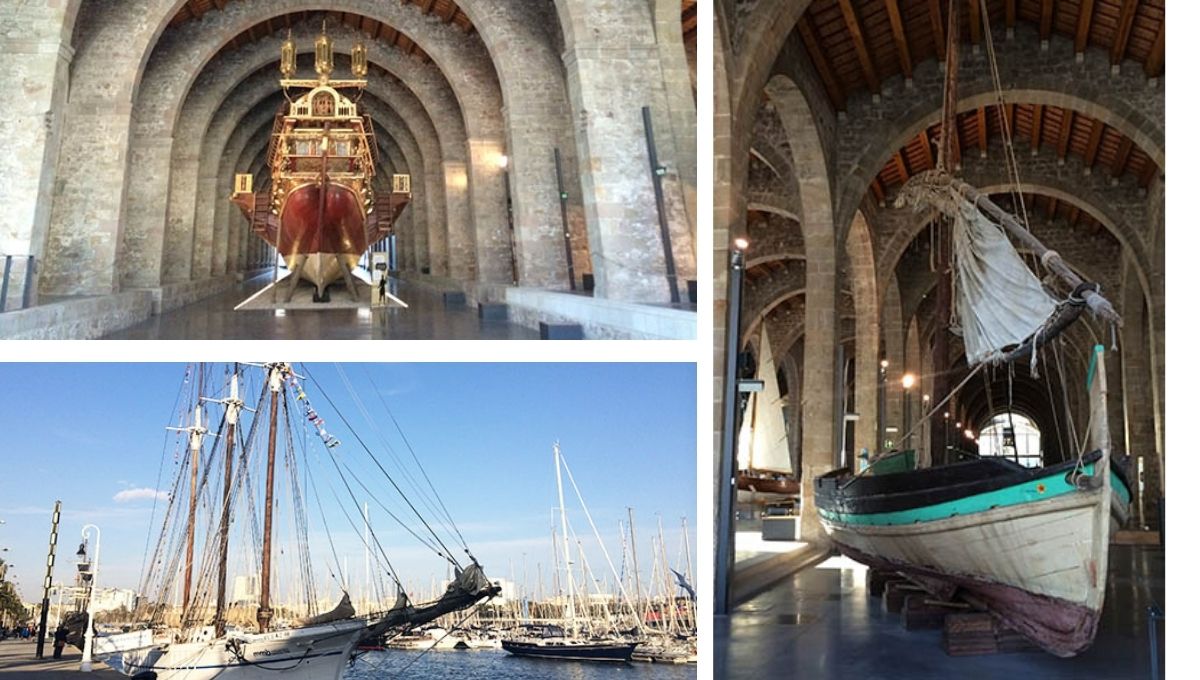
This splendid museum, part of which is housed in the Royal Dockyards, is well worth a visit, especially if you are a sailing enthusiast. Its impressive galley, part of the MMB‘s collection of historical ships, will not leave you indifferent.
Don’t miss the Schooner Santa Eulàlia, which is located 5 minutes from the museum in the port of Barcelona and whose visit is included in the price of the ticket.
32- Barcelona Aquarium
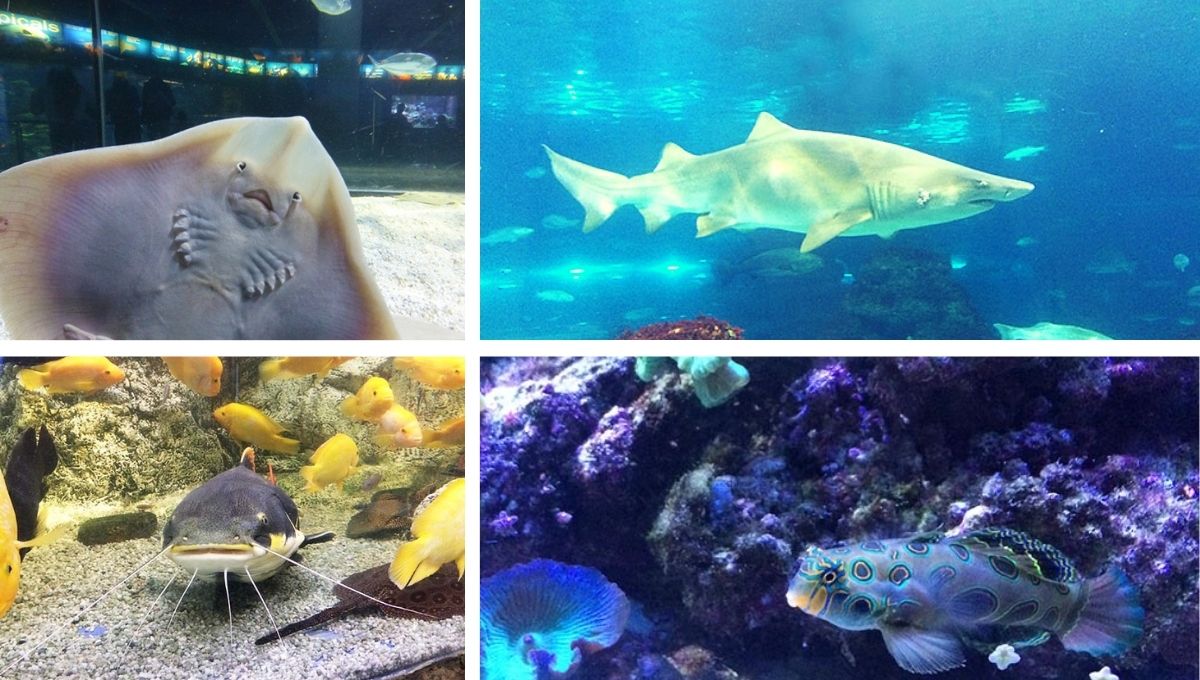
Located near the old port (Port Vell), the Aquarium is a great place to visit with children, whatever the weather. It will take you on a journey through the seas and oceans of the world.
- The oceanarium is the most impressive part of the aquarium. It is home to many species, the most spectacular being the sharks.
33- Other museums of interest
- The Museum of the History of the City of Barcelona (MUHBA) traces, in a didactic way, the past of Barcelona from its origins to the present day.
- The Palau de la Virreina on Las Ramblas, next to the Boquería market, is a beautiful free space dedicated to photography and audio-visual art.
- The Palau Robert is a free cultural and artistic centre that organises exhibitions on various themes such as photography, science, culture, fashion, and politics…
- The CCCB, which is next door to the Macba, does not have a permanent collection, but rather temporary exhibitions. These are always very diverse and are characterised by great creative freedom.
- The Montjuïc Olympic and Sports Museum is an interactive space that houses a collection of 5,000 items related to the Olympic Games and sports in general.
Off the beaten tracks things to do in Barcelona
34- Visit the beaches of Barcelona by bike
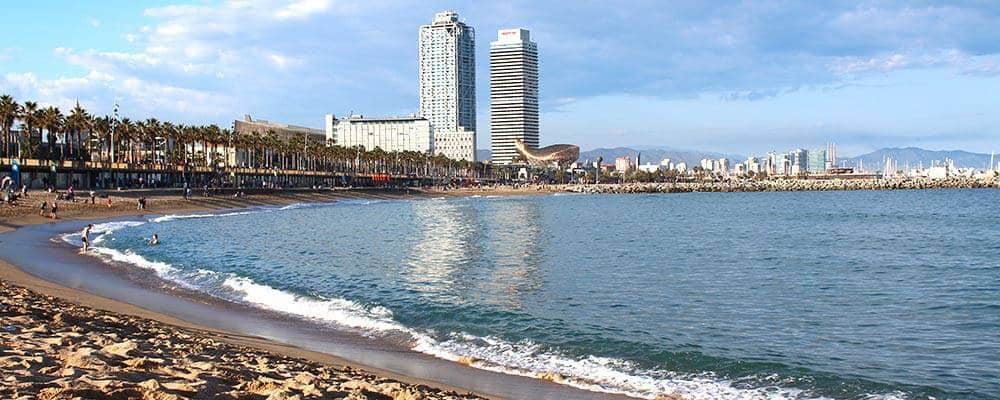
If you feel like taking a trip to discover the beaches of Barcelona, don’t miss this guided bike tour. You’ll learn about the different neighborhoods along Barcelona’s beach and their history while enjoying the sea air.
35- Take a guided bike tour of Barcelona’s historical and artistic sites
This guided bike tour covers Barcelona’s Gothic and Modernist sites. A professional guide will lead you through the Gothic district, showcasing the cathedral’s exquisite facade. You’ll then pedal towards Barcelona’s renowned Modernist structures, such as Sagrada Familia, Casa Milà, and Casa Batlló, appreciating Gaudi’s distinctive geometric designs.
36- Discovering the city through outdoor sports
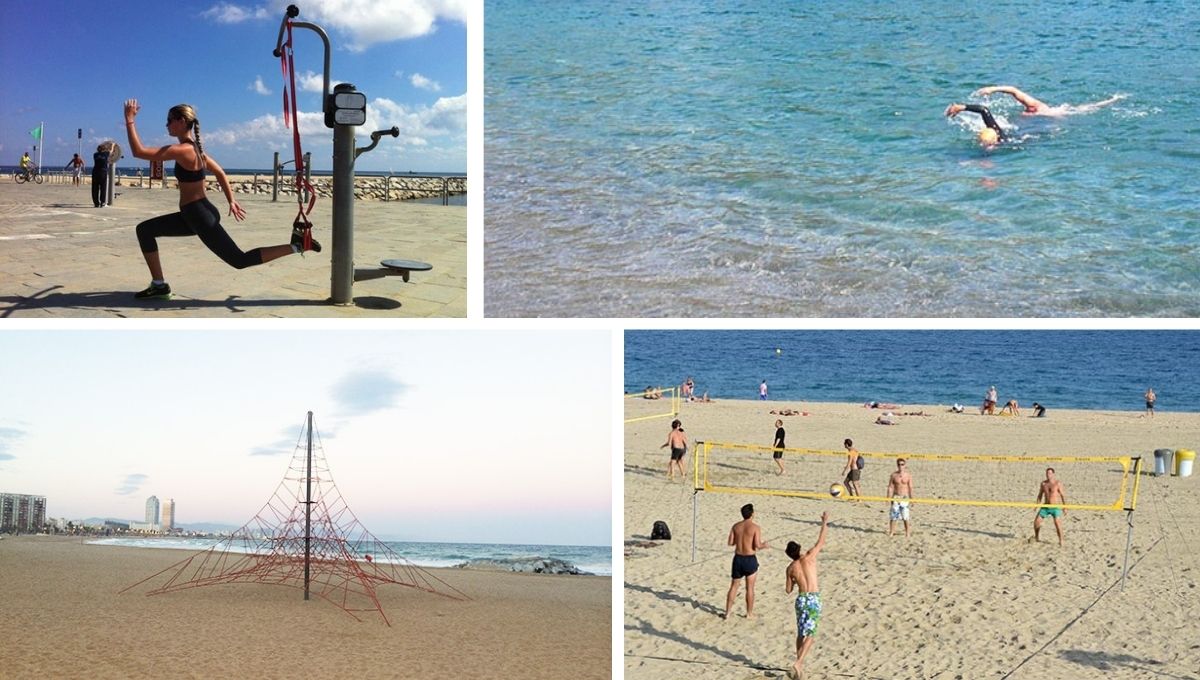
In between visits, you may want to stretch your legs in a different way.
Barcelona’s mild climate is ideal for outdoor sports activities. In this article, we explain how to do sport for free in Barcelona. Isn’t life great?
37 – Go on a Street Art tour
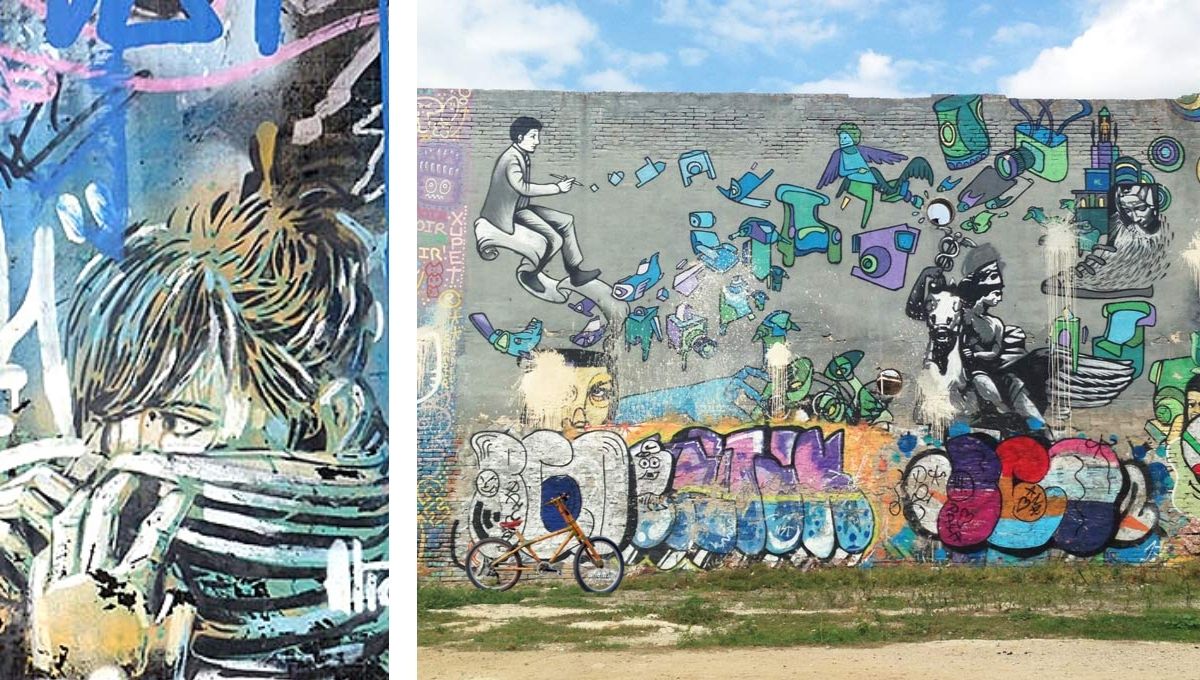
Thematic tours allow you to discover the city in an unusual and original way.
The theme of street art is rich and exciting, and an organised tour will take you to unexpected places in Barcelona. Are you ready to discover ephemeral wonders?
38 – Horta Labyrinth Park
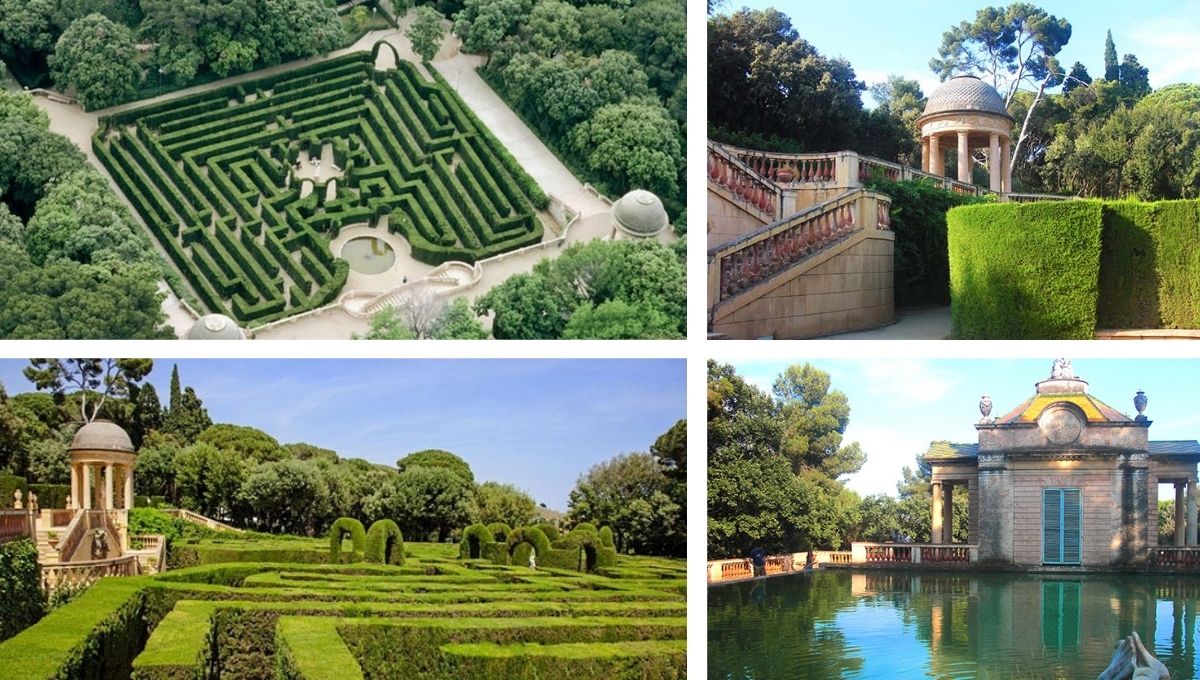
The Horta Labyrinth Park is the oldest in Barcelona. Located in a remote area of the city, it is well worth a visit, especially if you are feeling romantic or if you are coming with your family.
Its beautiful garden, which covers more than 9 hectares, is the perfect place for a bucolic stroll during which you can escape the hustle and bustle of Barcelona for a few hours.
More things to do in Barcelona: Discover Catalan gastronomy!
39 – Local specialities and drinks
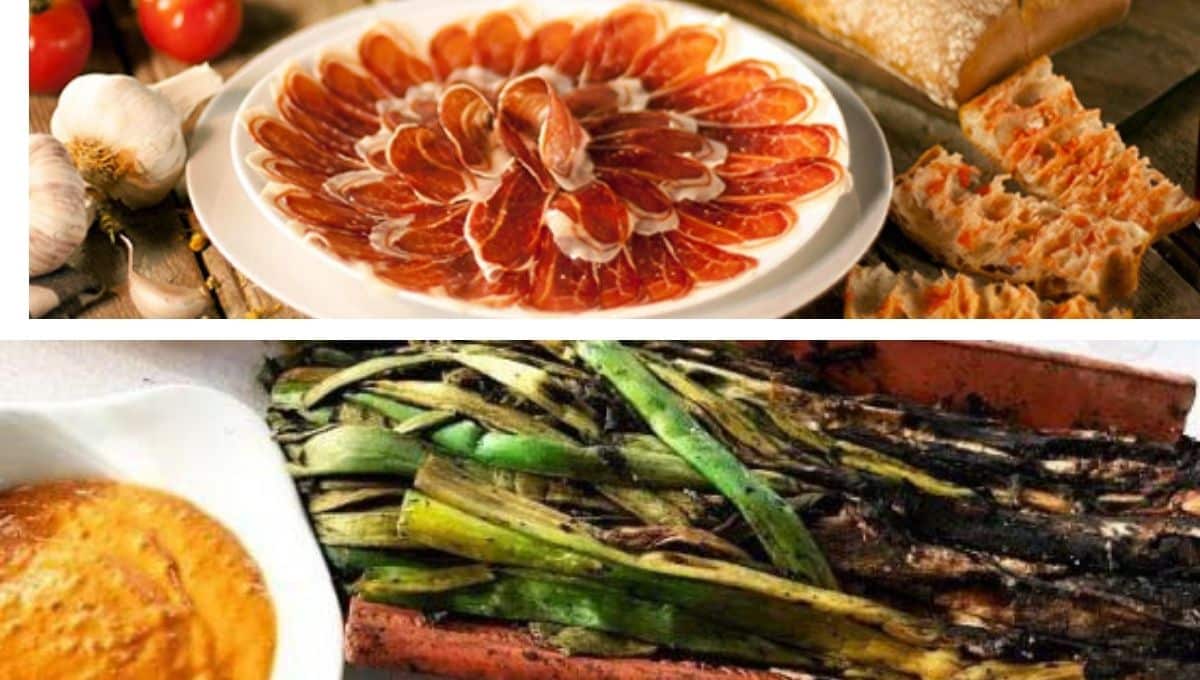
Tomato bread
In Catalonia, pà amb tomàquet (bread with tomato) is a real institution. This slice of delicious country bread covered with olive oil and juicy tomato and garlic goes well with a good tortilla, cheese, or any local cold cuts. A real treat that will make you forget all about bread and butter!
The calçots
You can try this typical Catalan speciality from November to April, although the peak season is between the end of January and the middle of February. The tradition of eating these sweet and tender onions from Valls near Tarragona has spread throughout Catalonia. Catalans gather with friends and family to organise the typical seasonal calçotada.
The calçotada is made of a dozen or so calçots that usually come blackened by the wood fire on a hot tile. Of course, you must remove the black “coat” from each onion before eating it.
You get it all over yourself, but it doesn’t matter because it’s really good. Some restaurants even provide a large bib and plastic gloves for the more delicate. But we prefer it without gloves because it’s more fun!
The calçots come with a tasty sauce made of tomatoes, peppers, garlic, bread, almonds, roasted hazelnuts, oil, vinegar, and salt: salvitxada. It’s the sauce that makes all the difference. It goes very well with the taste of calçots, which we like to dip in it. Slurp!
Vermut or cava
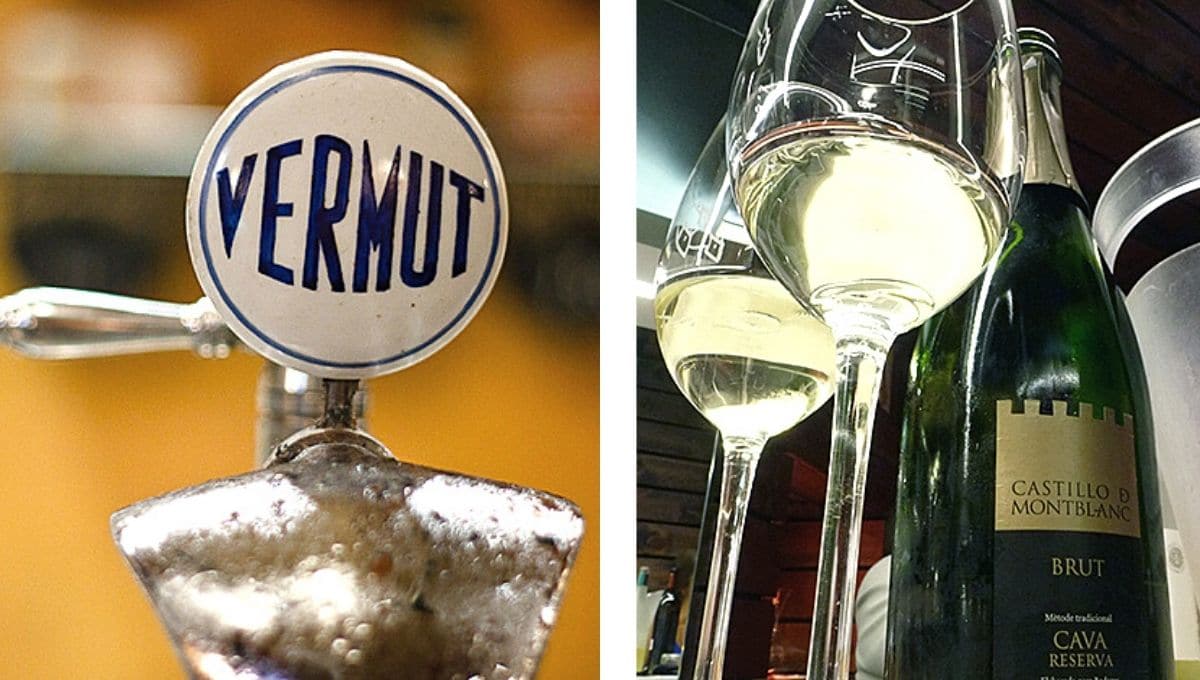
- Cava is a sparkling wine invented at the end of the 19th century by two Barcelonians using the Champagne method.

Here in Catalonia, this tasty and refreshing drink is not very expensive. To taste it, we recommend la Xampanyeria, for its cava and cheap tapas.
Vermouth is a wine macerated with herbs that is very popular in Catalonia. It is customary to meet in a bar with friends on Sunday at lunchtime and sip it as an aperitif with a few good olives.
Breakfast in Catalan style
There’s nothing like taking advantage of the 10-11am break to have breakfast at a coffee counter: tomato bread, tortilla (truita in Catalan), and espresso or café au lait, as many Barcelonians do.
Sometimes, I like to have a good sandwich with my coffee. You can find these breakfast options in almost every café or bar in the city.
Sipping thick hot chocolate in winter
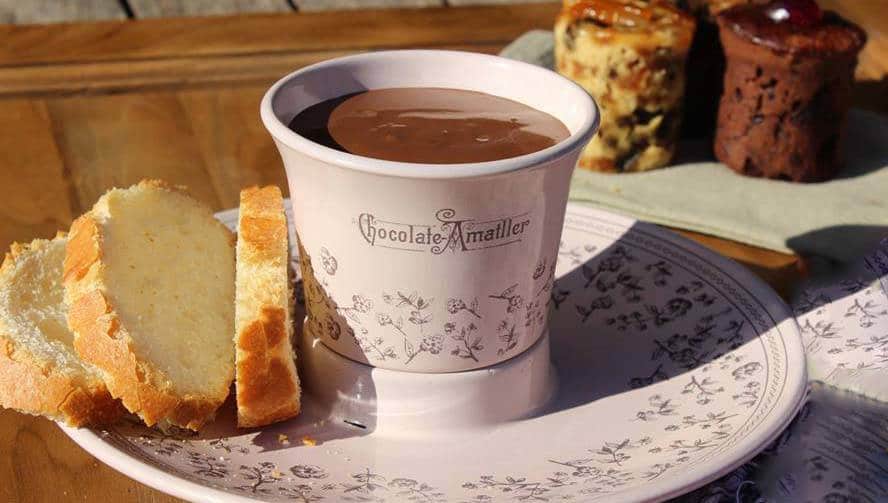
Thick, dense Spanish hot chocolate reminds me of the good chocolate cream my grandmother used to make. That’s probably why I like to enjoy it in winter.
The pretty indoor terrace of Casa Amatller is a perfect setting for this pure moment of pleasure, but I also like to sip it sometimes in the typical granjas we talked about in this article.
Enjoy a fresh horchata in the summer and turrón at Christmas
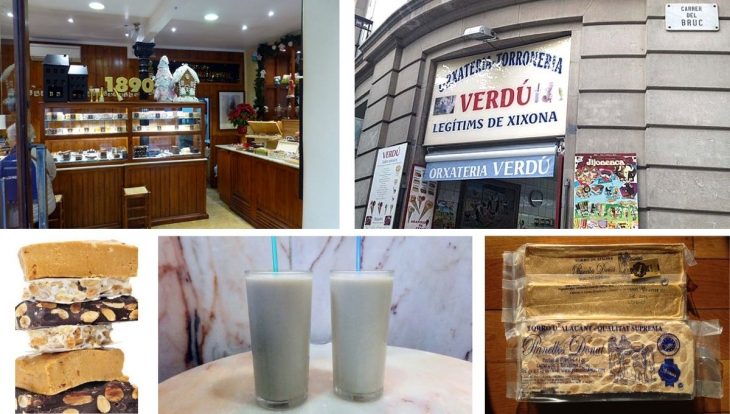
Its particular taste means that not everyone likes it straight away, but I love it and am a fan of its sugar-free version.
Originally from Valencia, horchata de chufa is a drink made from a tuber (Tiger Nut) to which water and often sugar is added. It should be drunk very cold.
In the summer, this local drink is extremely thirst-quenching. It should be reimbursed by social security because it is so good for your health!
In our article on horchata, we provide you with a list of addresses that produce horchata every day in a state-of-the-art manner. Nothing to do with the ones you can find in bottles in supermarkets!
These same shops sell at Christmas good homemade touron, a typical sweet made from almonds, egg whites and sugar to be enjoyed during the festive season.
Eating tapas
Spaniards love to meet at the bar or in a small neighbourhood restaurant to enjoy tapas with friends or family.
The people of Barcelona are no exception to this rule. They order a beer, vermouth, or a glass of wine, with various tapas to be shared happily among all. Here, it’s called a pica-pica and to tell you the truth, I love it!
Bombas picantes, croquetas or patatas bravas
If you come to Barcelona, try at least one of these three specialities. You’ll hear all about it.
It is said that the grandmother of the current owners of the Cova Fumada invented the recipe for bomba picante, a typical Barceloneta speciality made with potatoes, meat, aioli, and hot sauce (top left in the photo). A delicious dish.
Spanish croquetas need no introduction. Crunchy on the outside and melting on the inside, the most classic are those with ham, cheese, or chicken. My favourites contain squid ink or mushrooms. I’m already salivating at the thought of them.
Have you ever heard of patatas bravas? These fried potatoes with hot sauce and aioli are one of the classic tapas that you must try. Some creative restaurants (such as Mundana de Sants or Taverna del clínic) have fun revisiting them and the result is perfect!
Rice specialities: paella and so on
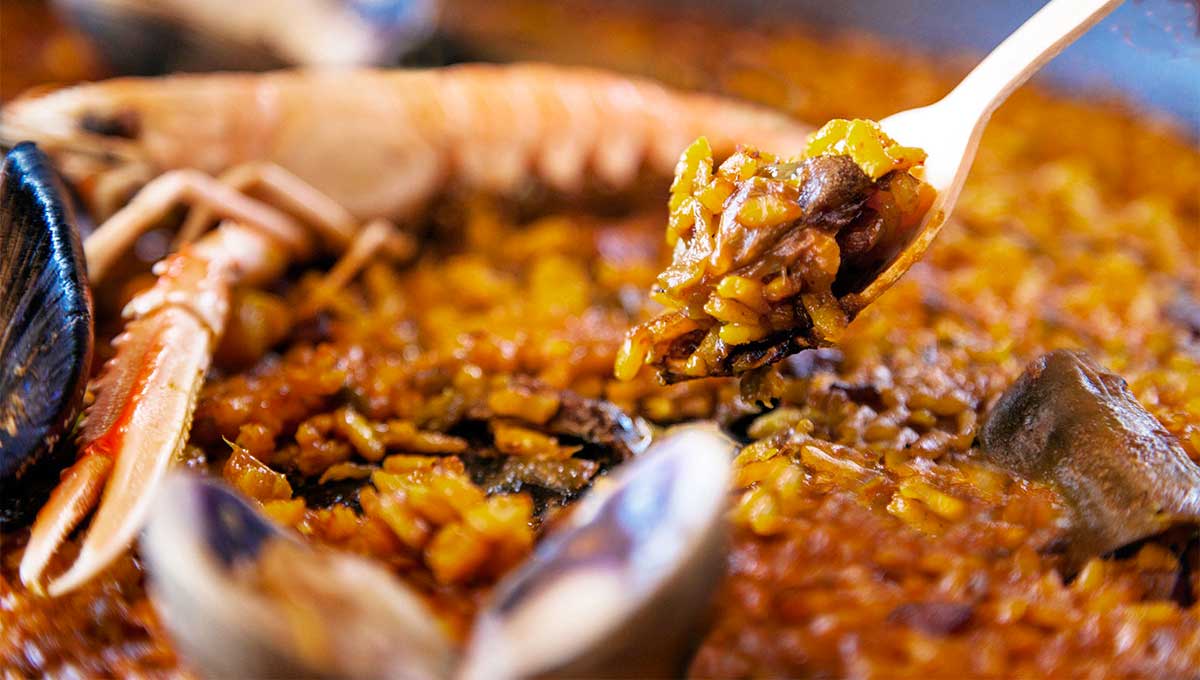
Paella originated in Valencia and is internationally renowned. It is quite common to try it in Barcelona, but I also recommend you try more local specialities such as arroç negre (black rice) or arroç caldos, which are juicier dishes and in my humble opinion as tasty, if not tastier, than paella.
Catalan Cream
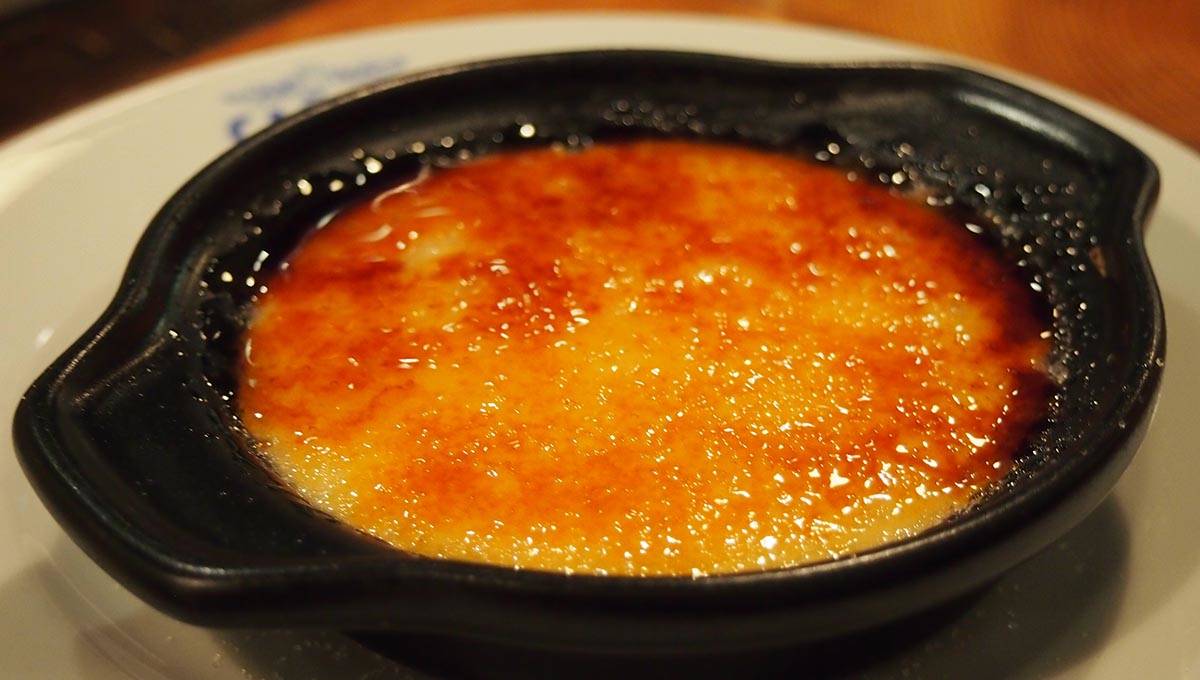
A Catalan version of the crème brûlée, this egg and milk-based dessert is a classic that you must try.
40 – Discovering the beautiful markets of Barcelona
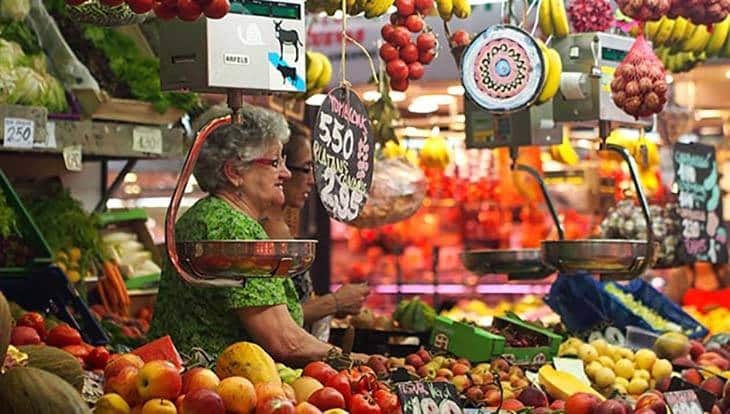
In my opinion, the best way to discover an unknown city is to visit one of its markets. I find it a good way to learn more about the daily life of its inhabitants.
Barcelona’s markets are gourmet stops where you can discover delicious food, beautifully presented and very photogenic. A pleasure for the eyes and the taste buds: 2 in 1!
Things to do in Barcelona: Carpe Diem!
Caught up in the hectic pace of our daily lives, we often forget to savour the moment. If there is one thing to remember about this pandemic, it is that we need to make the most of all the beautiful moments that life offers us on a plate every day.
The beauty of a sunset, a cup of coffee on a sunny terrace, the joy of a trip with family or friends, the wind that caresses our face during a walk outdoors, the discovery of a new exhibition… All these little moments that seemed so insignificant take on a different meaning now that it is not so easy to move around and discover wonders, in Barcelona or anywhere else in the world…
41 – Going to the beach
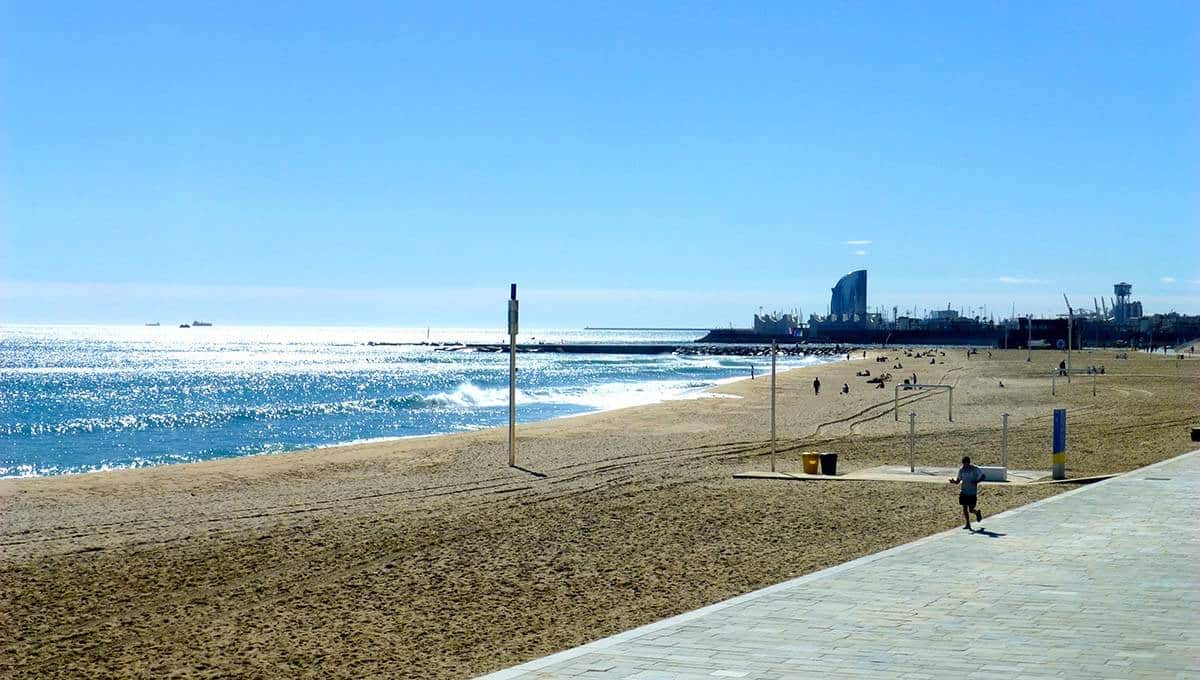
Another important asset of Barcelona is its beaches! And mind you, I’m not talking about a little stretch of city beach that’s hard to get to, but 5 kilometres of great beaches lined with cafés, bars, and restaurants.
There’s nothing like a relaxed walk by the sea to unwind and breathe in the Mediterranean Sea air! Are you coming?
42 – Contemplating the sunset on a catamaran to the sound of a jazz saxophonist
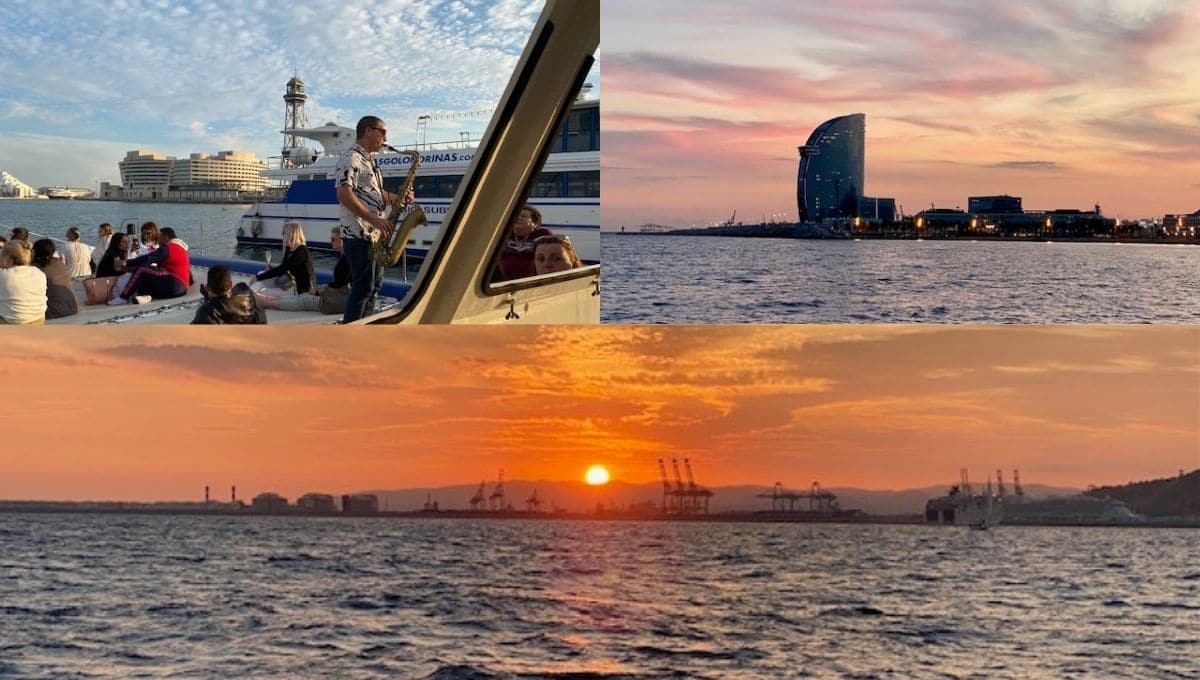
My family and I never miss an opportunity when we get together to create memorable moments. For example, we recently took a mini cruise on a catamaran for an hour and a half and watched a beautiful sunset over Barcelona while listening to a jazz saxophonist.
A beautiful moment of peace and positive energy for a good price! If, like us, you want to try this beautiful experience, click on the link below.
43 – Having a good time at Tibidabo
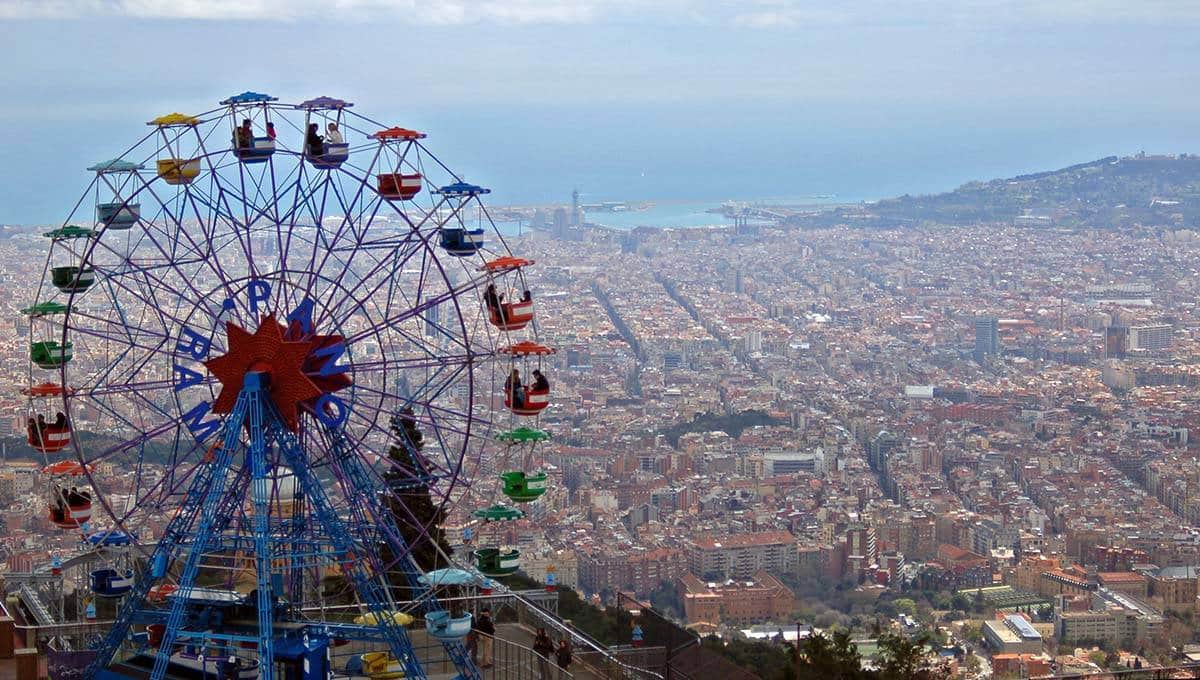
There is another hill in Barcelona that faces Montjuïc: Tibidabo. Climbing it to discover its amusement park and its panoramic views of the city is a fun experience that allows you, especially if you have children, to have a good time relaxing while discovering Barcelona from another angle.
44 – Walking along the Carretera de les Aigües
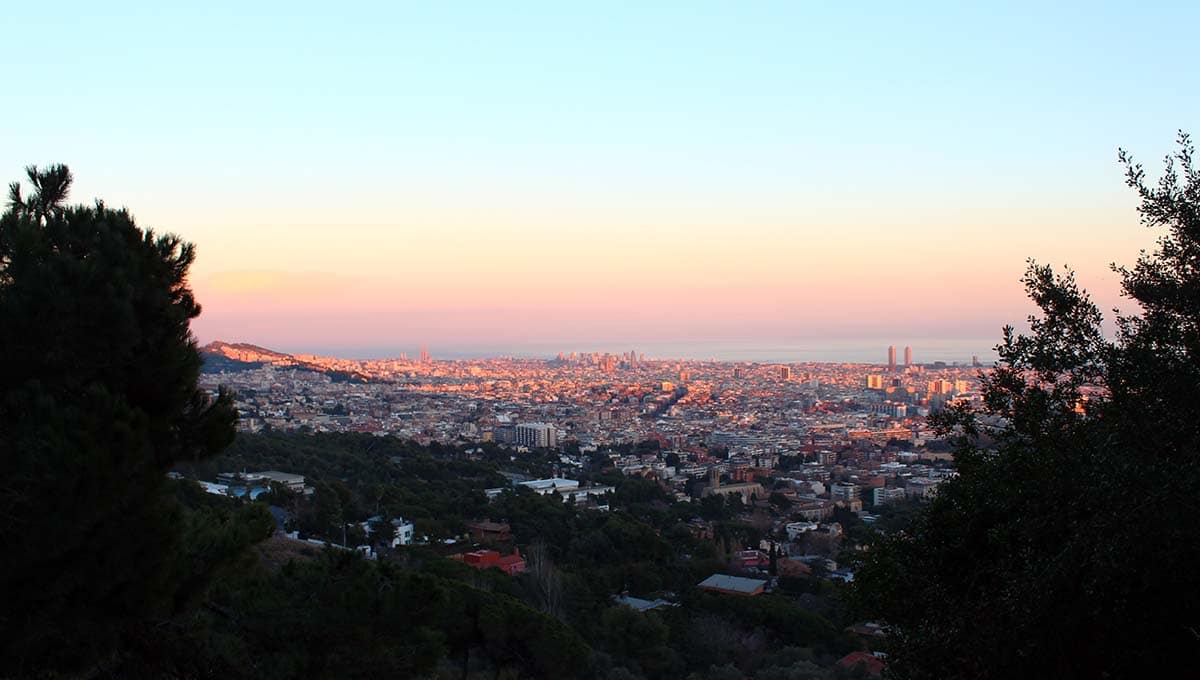
If there is a nice walk in the heights of Barcelona, it is the Carretera de les Aigües. On foot, running or by bike, this little walk that I recommend allows you to take a breath of fresh air while admiring the beautiful panoramas of the city of Barcelona. A real pleasure!
45 – Attend an authentic flamenco show or a Spanish guitar concert
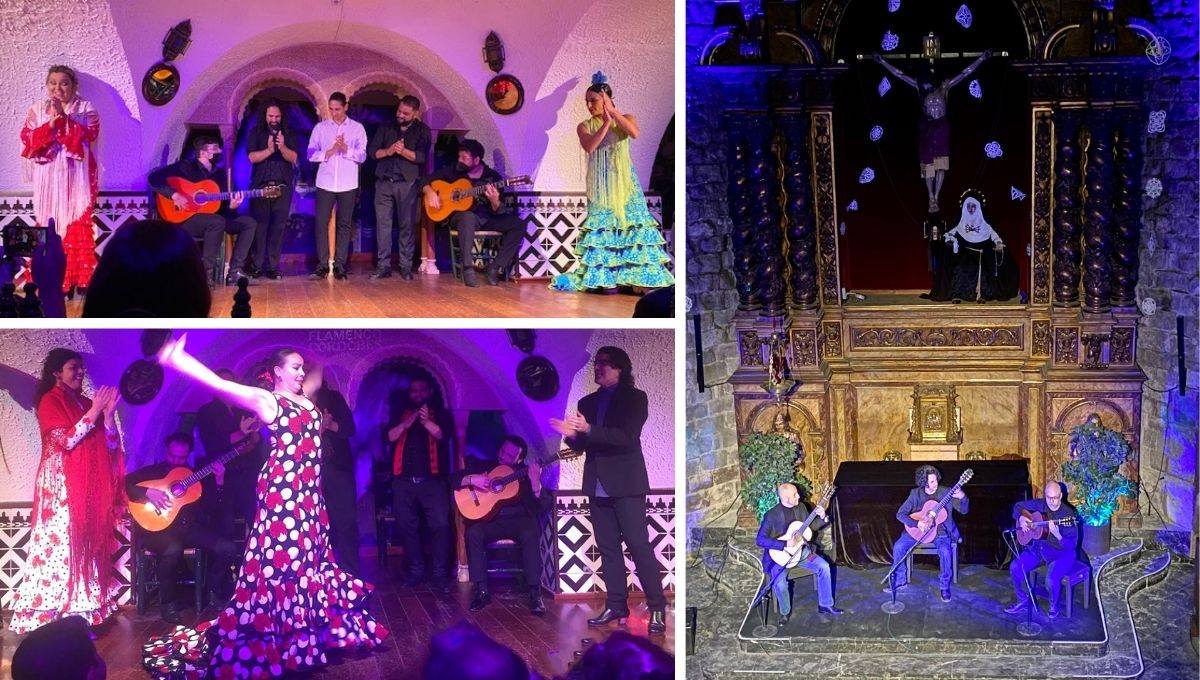
Although Barcelona is not the birthplace of Flamenco, the Tablao Cordobés has been offering authentic and quality performances of this Andalusian art form for decades, combining singing, dancing, and fiery guitar chords. This is our favourite place in Barcelona, but there are other venues that we have also tried and which we discuss in this article.
A quieter way to spend an evening and soak up Spanish culture is to attend a guitar concert in a beautiful, intimate venue. Are you coming?
46 – Rooftop: panoramic terraces to enjoy life and the city from above
There’s nothing like treating yourself to a moment of relaxation from time to time…
Having a drink with some tapas on a hotel terrace while admiring a beautiful panorama is a small pleasure that we sometimes allow ourselves to celebrate an event or have a good time with friends. Do you want to try it too?
47- Shopping in Barcelona
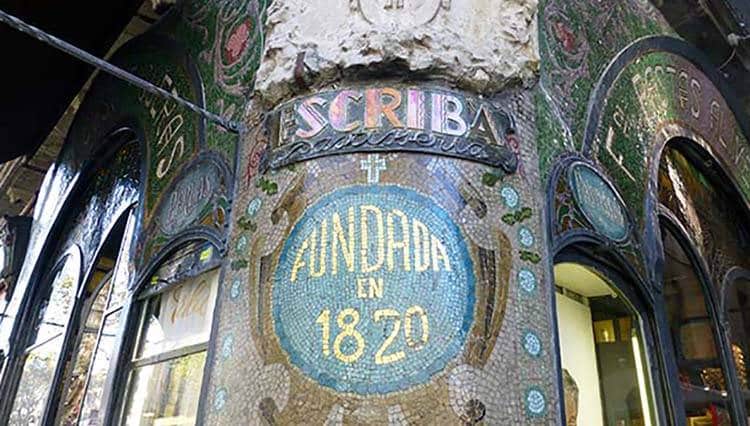
Would you like to follow me to some beautiful shops that you won’t find anywhere else? If you’re going shopping, you might as well have a different experience, right?
Some of Barcelona’s shops from the last few centuries hide real architectural treasures. Discovering a pretty shop while strolling through the streets of the historic centre or the Eixample district is a little pleasure that I never get tired of. In this article, you will find my selection of emblematic shops that you should not miss.
If you prefer more contemporary shops, then this article for men’s shopping and this one for women’s shopping will surely interest you.
If you’re more of a shopping centre person, you’ll like this article!
And if you want to have a good time in an open-air shopping centre 20 km from Barcelona, go to the Roca Village. You will find only outlets of international brands: Levis, Puma, Billabong, Tommy Hilfiger, L’Occitane, Lacoste, Desigual, and the official FC Barcelona shop…
Go for it if you want to take advantage of discounts and bargains without having to wait for the sales periods.
48 – Discovering Catalan traditions
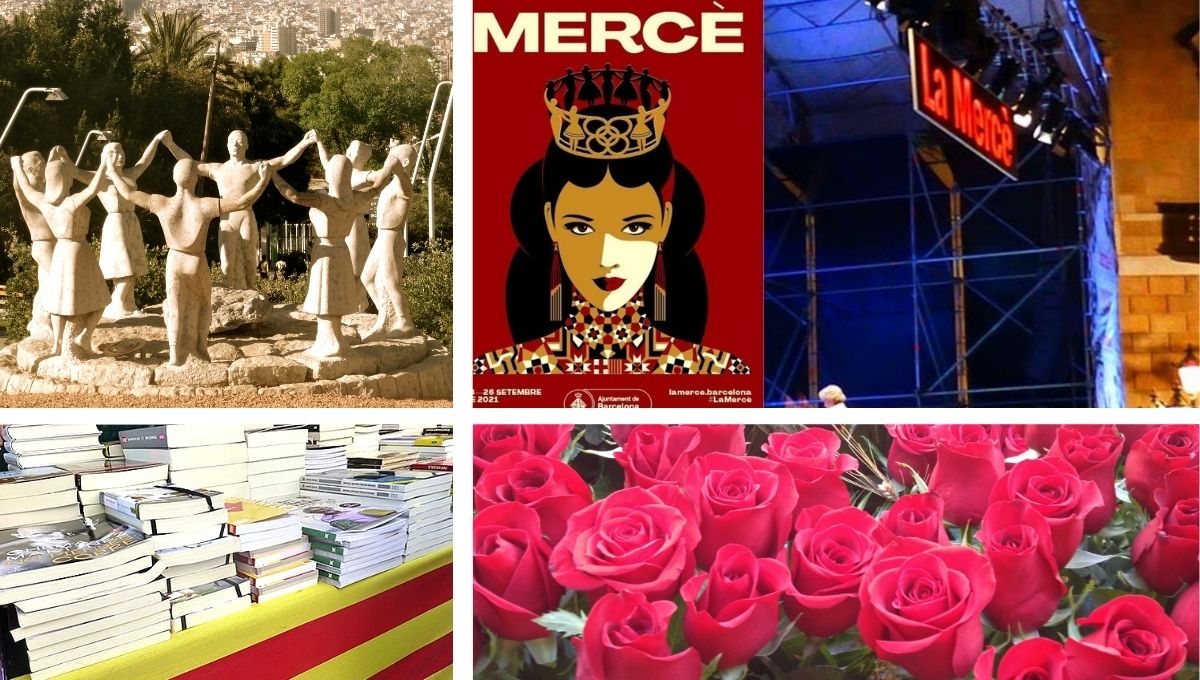
Catalonia is a region faithful to its traditions. These traditions give Barcelona, its capital, the opportunity to organise cultural and festive events throughout the year.
The Epiphany in January, Carnival in February, Sant Jordi in April, Sant Joan in July, the Fiestas de Gràcia in August, and Mercè in September are all events not to be missed if you are staying in Barcelona during the periods they are celebrated.
What else can you do in Barcelona? Going out at night
49 – Festivals galore
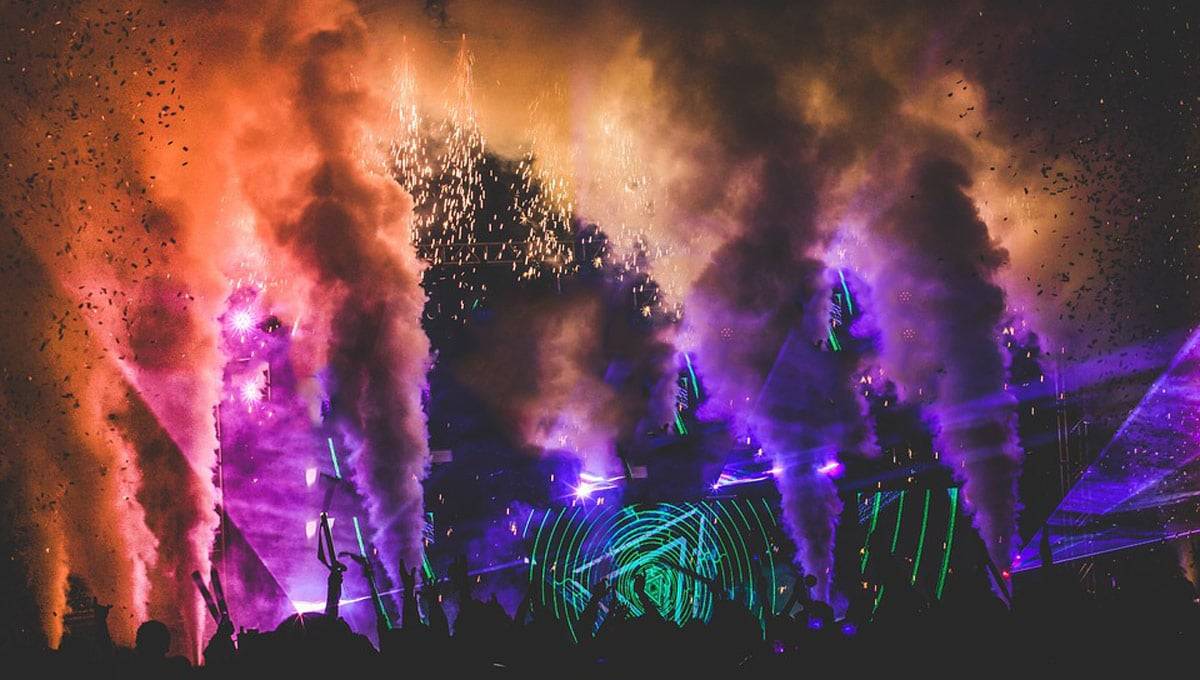
Barcelona is a city that hosts many festivals. Whether in summer, spring, autumn, or winter, the Catalan capital will always have an opportunity to make you dance.
- Festival Cruïlla: this is one of the biggest festivals in Barcelona, which has hosted big names such as the Black Eyed Peas, Love of Lesbian, Justice, Kygo and Parov Stelar.
- Primavera Sound: another of Barcelona’s great festivals, Primavera Sound has already hosted Gorillaz, Lorde, Disclosure, Tame Impala and more.
- Sónar: THE electronic music festival in the Catalan capital. It hosted great artists like The Blaze, The Blessed Madonna, The Chemical Brothers, Folamour, Eric Prydez and many more.
- Festival Jardines de Pedralbes: this one takes place in the Jardines de Pedralbes in a very elegant and relaxing setting. It features artists from the 20th century and the average age is generally higher than at the other three festivals mentioned above. In June and July 2022, you will be able to attend concerts by James Blunt, Nile Rodgers & Chic, Andrés Calamaro and other names that will be announced during the year.
- Barna’n’Roll 2022: on 29 and 30 July 2022, this small festival features ska, punk and rock bands and promises a wild night (or two).
- Brunch in the Park/Brunch in the City: This is not really a festival, but it is not a nightclub either. In the summer you can attend Brunch in the Park (usually in Montjuic). In the spring and autumn, it becomes Brunch in the City. Here, Techno and House dominate the agenda and the event is held weekly (every Sunday).
50- Unforgettable concerts
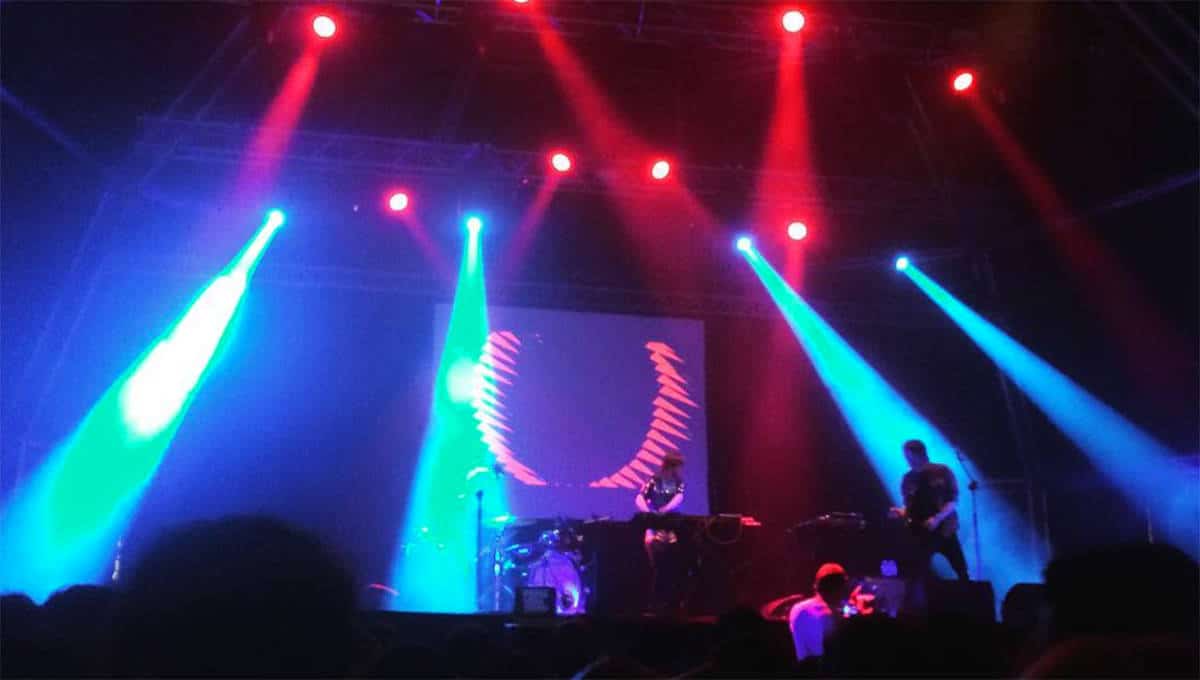
If you want to see the entire concert programme in Barcelona, we recommend you use a site like Songkick or Bandcamp.
With its many concert halls, Barcelona is also an ideal city if you want to enjoy live music. Palau Sant Jordi, Razzmatazz, Apolo, Marula Café, Barts, Sala Barts, Jamboree; there is no shortage of concert venues here.
Nightclubs
If you come to Barcelona to party, you won’t be disappointed. Whatever your style of music, the Catalan capital will always have a nightclub to suit your taste. Here are some suggestions:
- Razzmatazz: open every weekend and sometimes on Wednesday and Thursday nights, Razzmatazz is one of Barcelona’s iconic nightclubs. Techno, house, disco, rock; its 5 rooms and 2 terraces will not disappoint you and there is something for everyone.
- Bling Bling, Sutton, Costa Breve: all these clubs are close to each other, and the atmosphere is different from Razzmatazz. They are more elegant clubs that mix the most popular songs of the moment (from reggaeton to commercial house). Beware, go well dressed or you’ll have trouble getting in!
- Input and Moog: if you like techno, these are the clubs for you. Here, the atmosphere is more like Berlin and you won’t hear rock or reggaeton!
- Apolo: another emblematic club in Barcelona, Sala Apolo holds parties on Wednesdays, Thursdays, Fridays, Saturdays and sometimes Sundays. There is a wide variety of music, including techno, house, dubstep, pop, rock, jungle, hits, etc. More info on their website.
If you want more suggestions for clubs in Barcelona, you can read our article on this subject.
And finally… more ideas for enjoying the moment
Taking the pulse of Barcelona also means strolling through its streets, contemplating street scenes, discovering architectural treasures, having a drink at a bar, and observing the behaviour of the regulars.
In a way, it is, as Philippe Delerm writes, sprinkling his days with “tiny pleasures”. They brighten up the moments spent in the Catalan capital. Here are some suggestions for “carpe diem”.
- Walk around looking upwards to discover the beautiful facades and stained glass windows of Barcelona’s art nouveau buildings
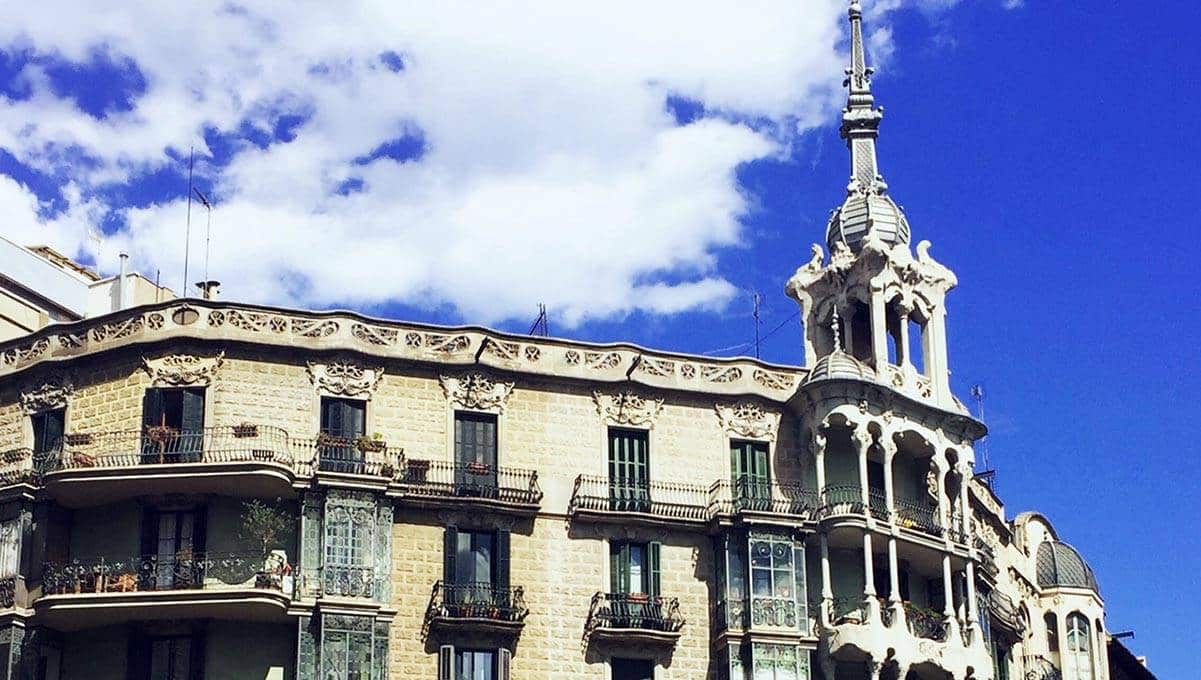
If you’re interested in architecture in Barcelona but are on a tight budget, there’s nothing like a free walk in the footsteps of Catalan Art Nouveau: a stroll that will have some nice surprises in store for you.
It is a pleasure to walk through the Eixample Dret and see the beautiful Art Nouveau facades of this district.
Whenever possible, I like to enter the patios of the Eixample district, small peaceful havens in this busy and noisy neighbourhood. Below is the cloister of the Basilica de la Concepció, the entrance to which is located on Roger de Llúria street.
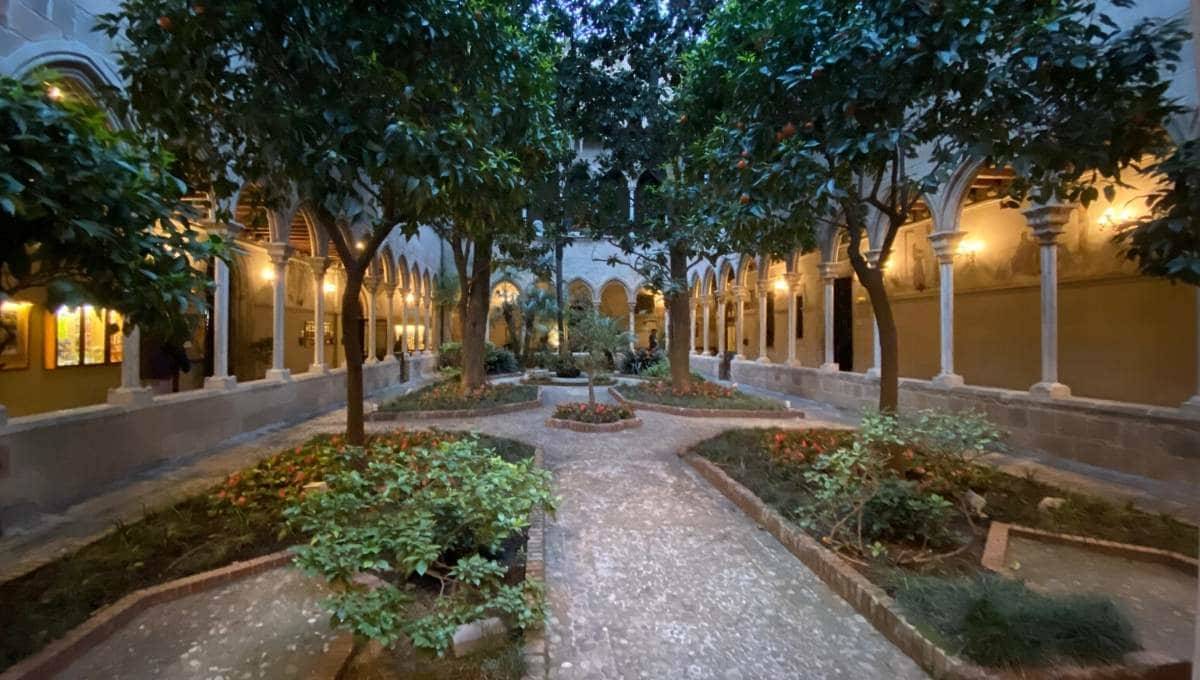
- Smell the scent of books from the Central bookshop
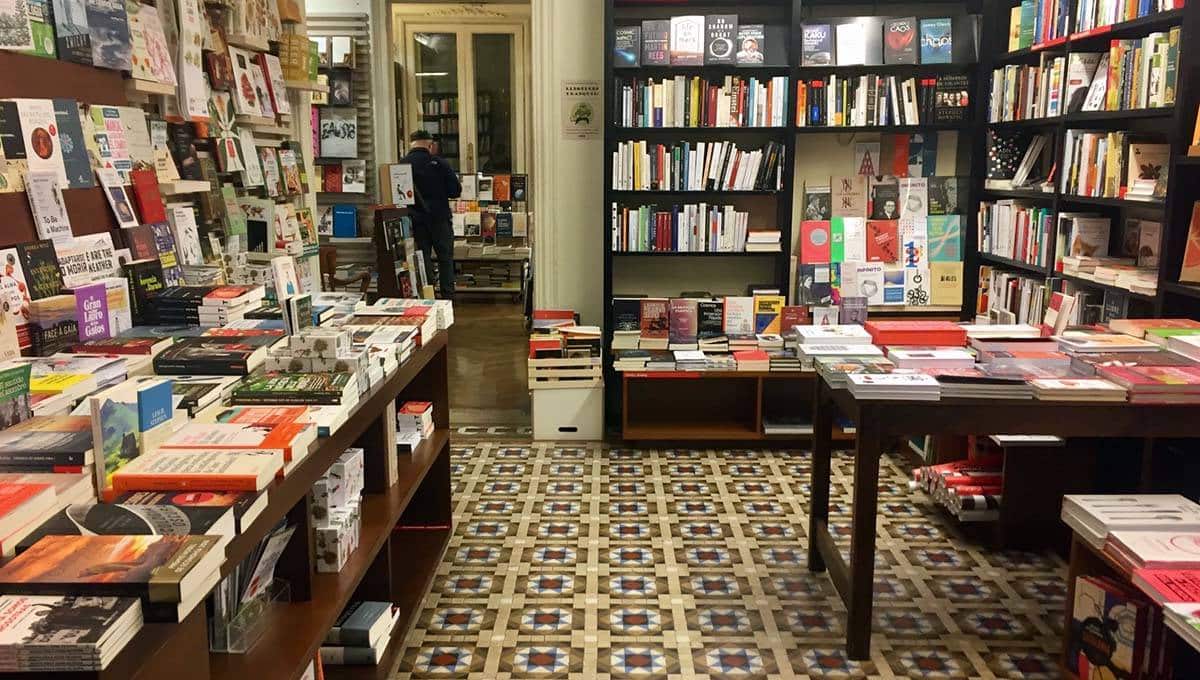
What a pleasure it is to hear the creaking of the wooden ground floor of this bookshop, housed in a splendid art nouveau building on Calle Mallorca, opposite the famous tapas bar, La Cervercía Catalana, and then explore the upper floors, its beautiful historical mosaic floor and its shelves overflowing with books. Don’t miss this pleasant foray into the world of culture and literature.
- Playing with shadows on the cobblestones of Passeig de Gràcia
Passeig de Gràcia is an emblematic avenue in Barcelona with more than twenty listed buildings such as Gaudí’s Casa Batlló and Casa Milà, Casa Amatller and Palau Robert. Strolling along its hexagonal cobblestones, whose pattern was created by Gaudí himself, will allow you to take some cool photos by playing with your shadows or those of passers-by.
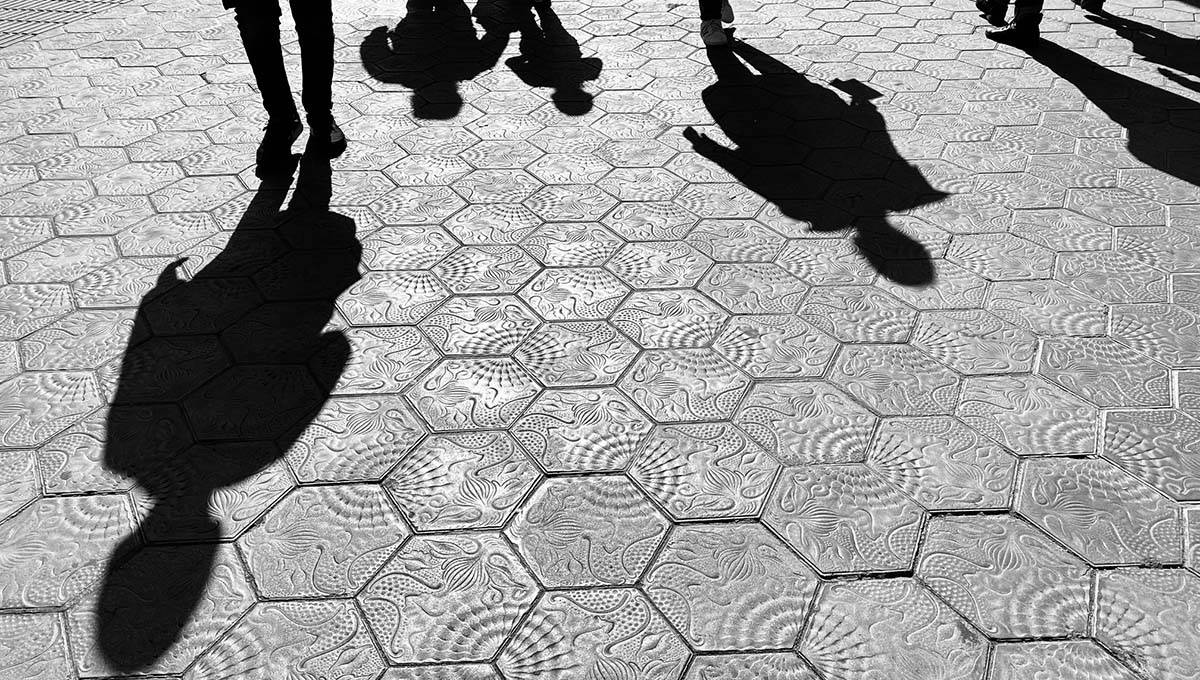
- Stroking (when possible) Barcelona’s famous animals
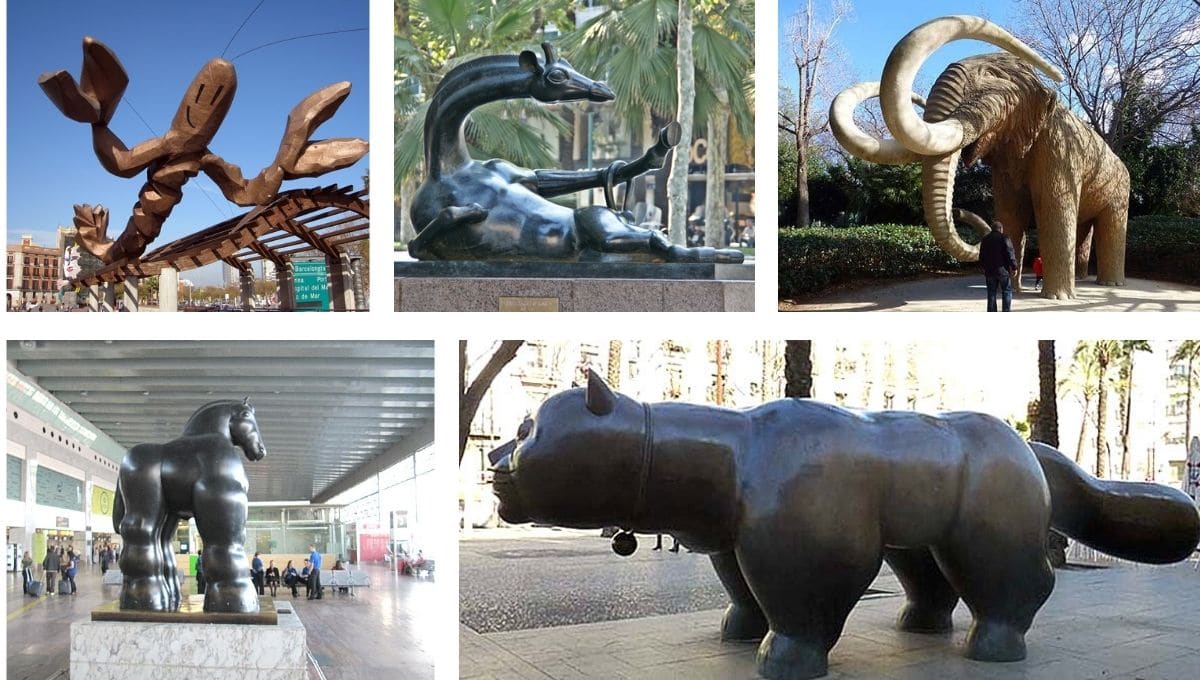
Barcelona is a real open-air museum. There are many sculptures from the end of the 20th century by internationally renowned artists such as Miró or Mariscal, author of the gamba in the first photo above.
On the Rambla del Raval, Colombian sculptor Fernando Botero’s el gato gordo (the big cat) observes and amuses passers-by who come to pet it. A horse by the same artist is also installed in the airport’s Terminal 2.
At the top of the Rambla Catalunya, the girafa coqueta (coquettish giraffe) struts around while a huge mammoth awaits you in the Parc de la Ciutadella. Would you like to go and see them by yourself?
Be sure to check out other works of art in our article on public art in Barcelona. You’ll probably need more than a weekend to see it all.
What to do and see around Barcelona?
Sitges: a pretty seaside resort 30 minutes from Barcelona
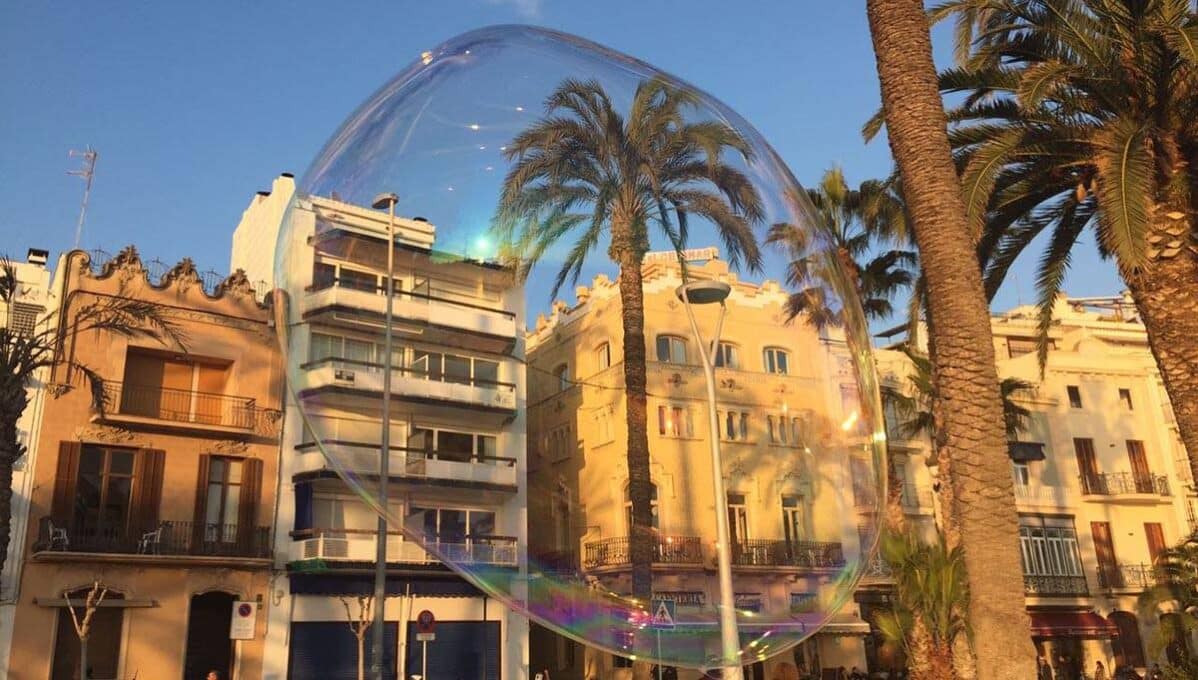
Sitges is a former fishing village that has become a charming and very popular seaside resort.
It’s impossible to get bored: between its architecture, beaches, shops, cafés, bars, restaurants, and nightclubs, there’s plenty to do in Sitges!
Montserrat: an excursion combining hiking and sightseeing, 30 minutes from Barcelona
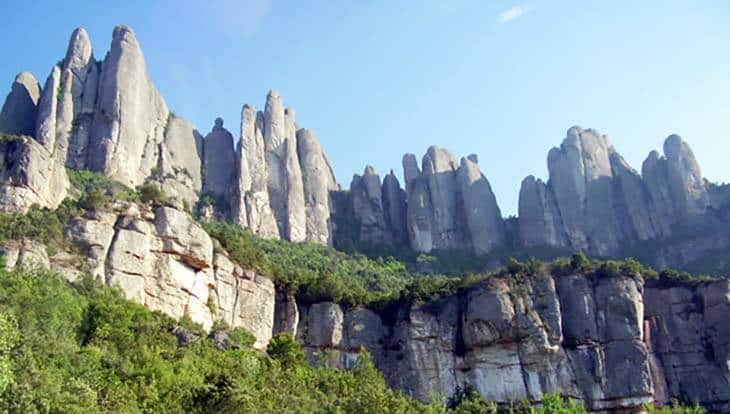
The organic and unusual shapes of the Montserrat mountains are said to have inspired Gaudí when he designed the towers of the Sagrada Familia. This unusual place, 30 minutes from Barcelona, is worth a visit thanks to the variety of activities it offers: walking, visiting its abbey and hiking. An excursion not to be missed!
Girona
Girona is a beautiful city full of history, only 40 minutes by train from Barcelona. Its historic centre and the river that runs through it give it a unique charm and you can visit it easily in one day. Discover its bridges, cathedral, medieval streets, and small restaurants without going too far from Barcelona!
Did you know that the steps of Girona Cathedral, as well as several locations in the city, were filming locations for the Game of Thrones series?
You can even take a Game of Thrones free tour of Girona, where you can learn about the series.
Or you can opt for a normal free tour which will allow you to discover the city for free!
Port Aventura
Aaah, who hasn’t heard of Port Aventura? This amusement park is one of the biggest in Europe and many visitors from all over the world come to try it out every year.
There are 43 attractions, all inspired by monuments and countries around the world. You can also try the other parks of the same group: Caribe Aquatic Park and Ferrari Land.
Beaches around Barcelona
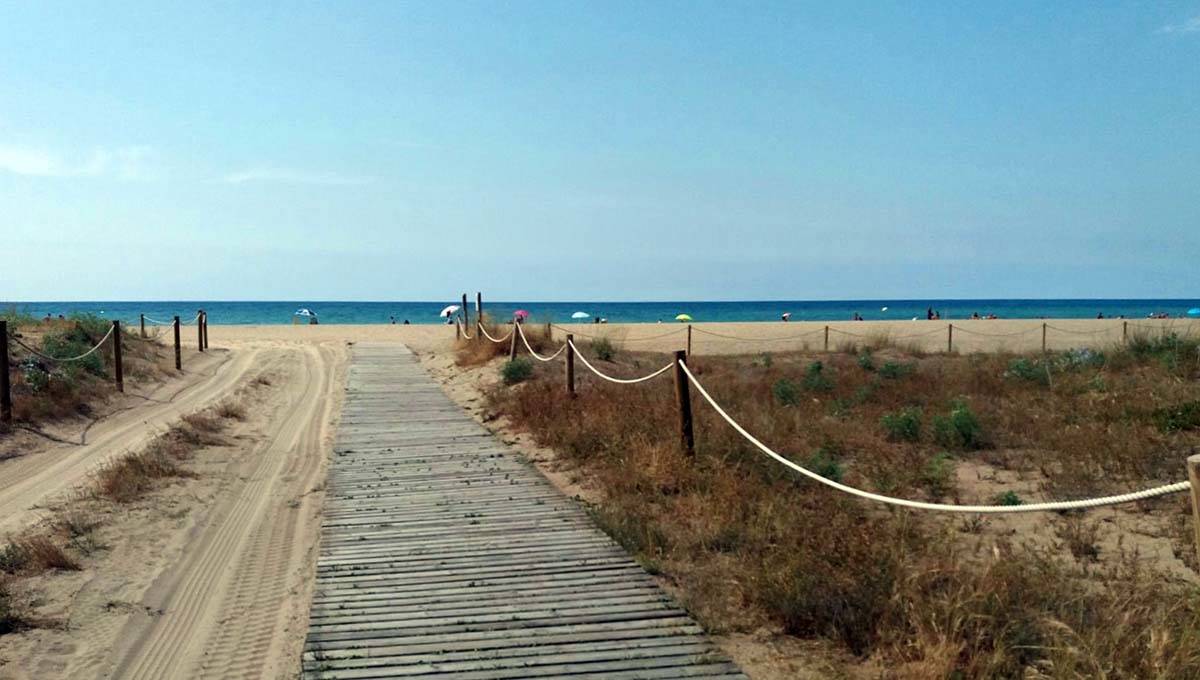
If you prefer to go out of Barcelona to the beach, there are plenty of them around the city:
- Sitges Beaches: As we mentioned in this article, Sitges is a charming town, and its beaches are no exception. You can easily get there by train from Barcelona in forty minutes and enjoy a day at the seaside with no worries!
- Gavà Mar and Castelldefels beaches: half an hour by train from Barcelona (using the same public transport card that gets you around the city), the great beaches of Gavà Mar and Castelledefels are ideal for a relaxing day out. Showers, football pitches, and restaurants; here you will have a relaxing time!
- Badalona Beaches: This town is close to Barcelona and you can even take the metro to get there! It has several beaches and they will be much less crowded than those in the Catalan capital.
- Garraf Beaches: Between Castelldefels and Sitges, the pretty little beach of Garraf with its white houses is as good as its neighbours and you can even get there by train from Barcelona in just 33 minutes.
Costa Brava
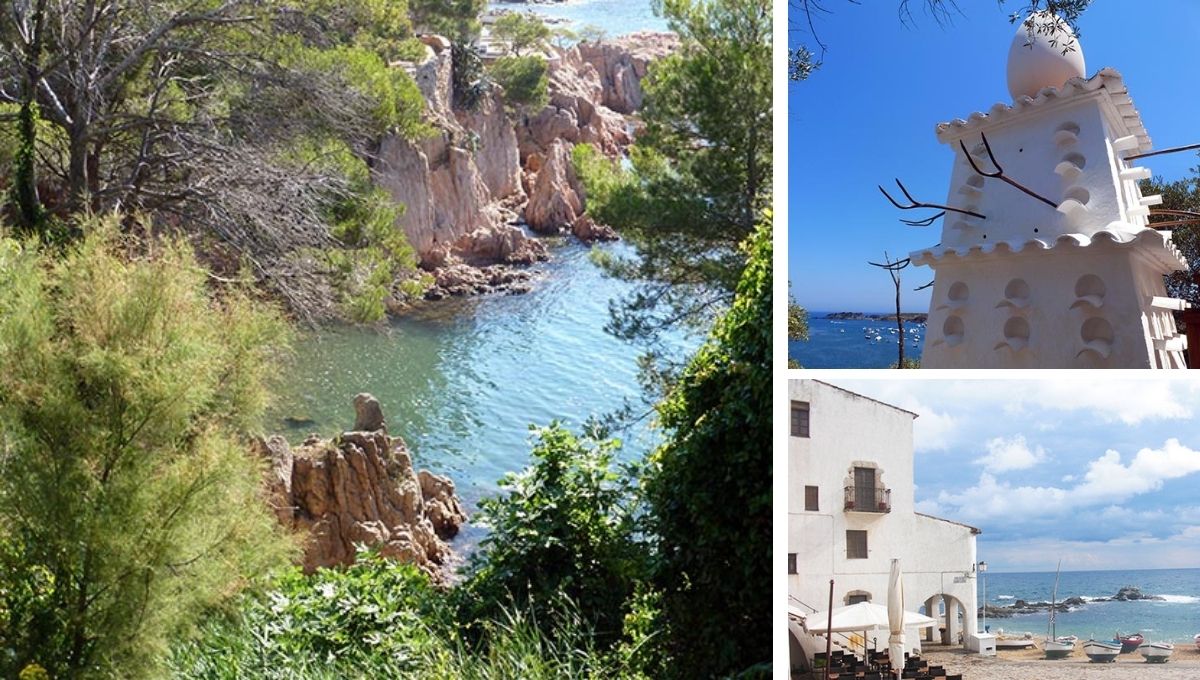
The Costa Brava is the coastline north of Barcelona and stretches for 200 km. Here you will find beautiful beaches and charming villages. We have even an article dedicated to this beautiful Catalan coastal area.
Colònia Güell: an unexpected discovery 20 km from Barcelona
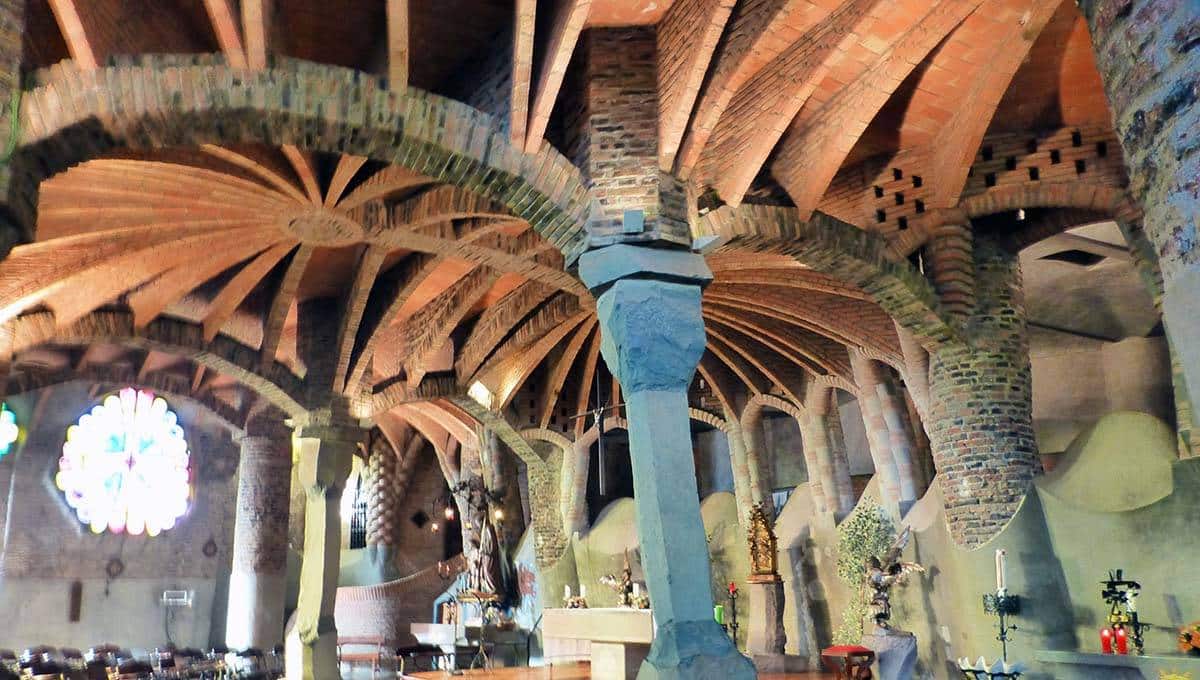
A trip to Colònia Güell can be a great idea for travellers who like to get off the beaten track.
This ancient working-class city, the outcome of Eusebi Güell and Antoni Gaudí’s project, is not as famous as their other masterpieces but promises some interesting discoveries. The crypt of the Colonia Güell contains the essence of the genius architect’s art.
Things to do in Barcelona in 1, 2, 3, 4, 5 or more days!
Things to do in Barcelona in 1 day
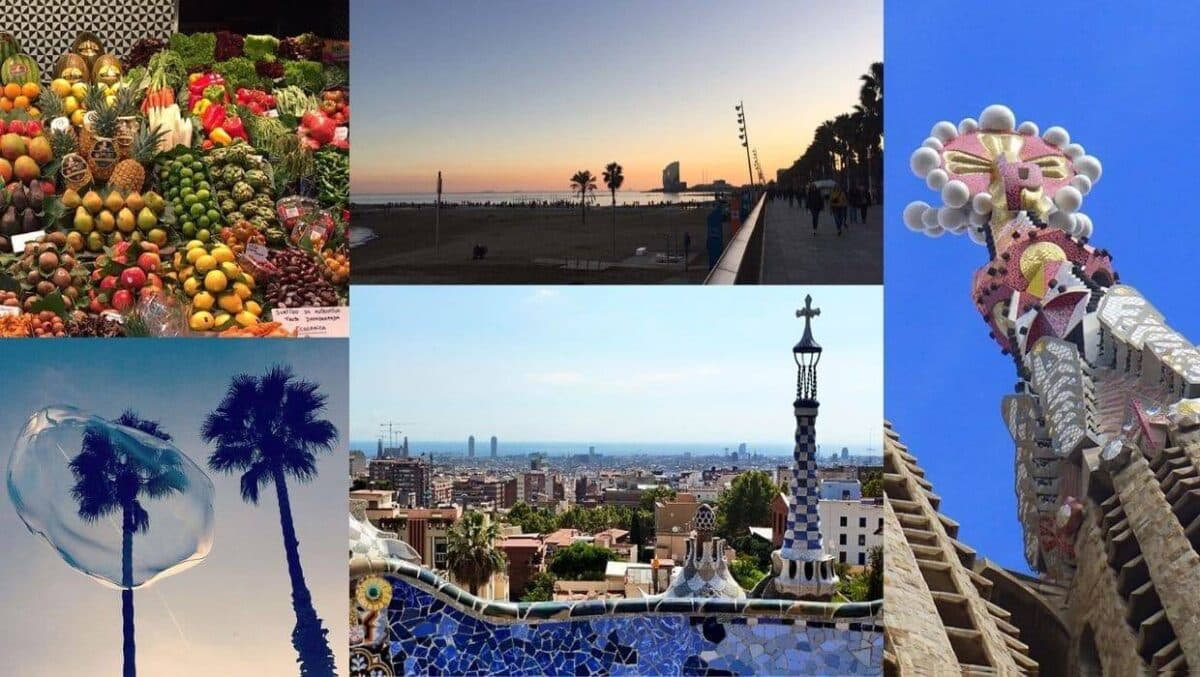
Is it possible to get a good overview of the city in one day? Our answer is yes, although we think it will leave you wanting more.
That said, it’s a good start to capture the charm of Barcelona and make you want to come back. Here is an idea of a complete programme to be tailored according to your desires and availability.
Hop into your walking shoes, clean your camera lens and get ready for some hard work…
| Hours | Barcelona in 1 day |
| 9h | Sagrada Familia |
| 11h | Parc Güell |
| 13h | Tapas around the Rambla Catalunya |
| 14h | Passeig de Gràcia |
| 14h30 | Las Ramblas |
| 15h30 | Gothic Quarter |
| 17h | Picasso Museum |
| 20h | Vermouth at the beach |
| 21h30 | Dinner |
| 23h | Pub crawl in Poble Sec |
| 1h | Nightclub |
| 5h (?) | Well-deserved sleep! |
- For more details, see our article: Visit Barcelona in 1 day.
Things to do in Barcelona in 2 days or over a weekend
Spending a weekend in Barcelona is a good way to get a change of scenery without having to travel to the other side of the world. Barcelona is a city with many attractions, and the programme for these two days can change according to your preferences and inspiration.
Programme suggestion for a first weekend in Barcelona
Whether you are a romantic, a sports enthusiast, a bon vivant, a party animal, a shopping fan or other, our weekend section will allow you to plan your trip and choose your activities according to your traveller profile.
| Saturday | Sunday |
|---|---|
| Las Ramblas | Sagrada Familia |
| Gothic Quarter and El Born | Park Güell |
| Palau de la Musica or Picasso Museum | Beaches and Barceloneta |
| Passeig de Gràcia | Stroll to the Olympic Port |
Things to do in Barcelona in 3, 4, or 5 days (or more if you like)
A weekend goes by too quickly! Nothing like a few more days to get to know Barcelona better. Ideally, you should stay at least 3, 4, or 5 days to get a better idea of the city.
What do in Barcelona all year round?
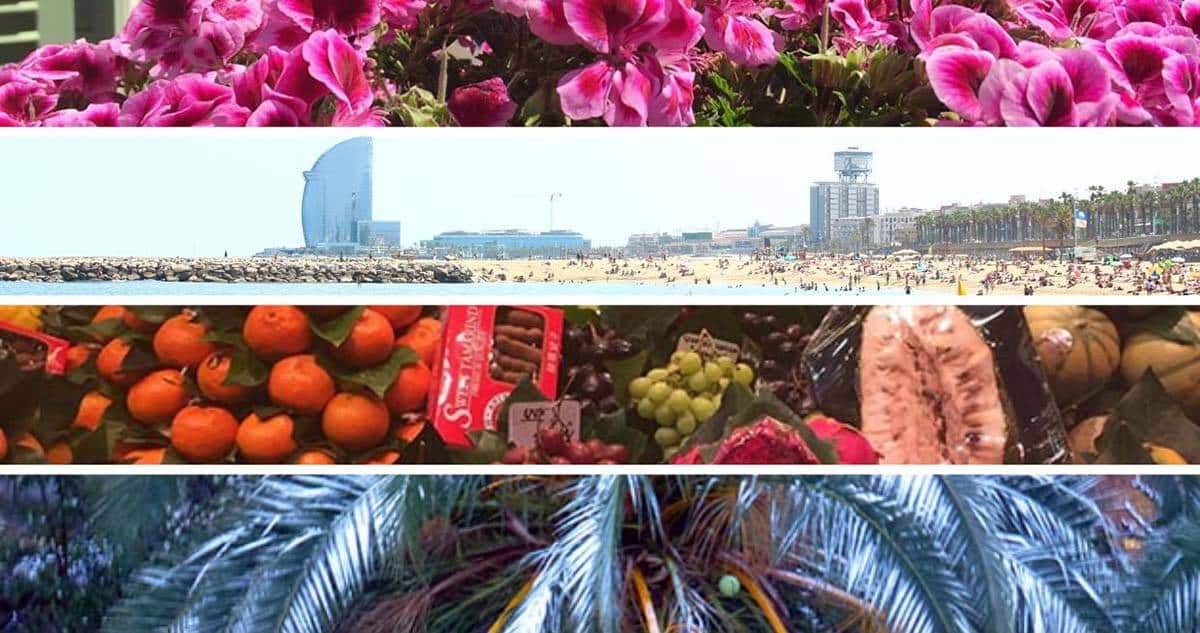
Barcelona receives the most tourists in summer and during Easter and All Saints’ Day. But its Mediterranean charm, its many assets and its mild weather invite travellers from all over the world to visit it all year round.
What are the best times for visiting Barcelona? And what should you pack for a stay in the Catalan capital? The answers are on our website.
Things to do in Barcelona in winter (February-March)
It does not always occur to travellers that February and March are the best months to discover the Catalan capital. Yet, these periods have many advantages: the temperatures are generally mild, the tourists have deserted the city and the winter light is conducive to beautiful photos.
Things to do in Barcelona in spring (April – May – June)
Spring is one of the most popular seasons for tourists to visit the Catalan capital. It is neither too cold nor too hot and the calendar is punctuated by local festivals. Sant Jordi on 23 April and Sant Joan on 24 June are great opportunities to learn more about Catalan culture and traditions while celebrating.
The temperatures in June are often hot but bearable, the days are getting longer, and summer is just around the corner.
Things to do in Barcelona in summer (July – August)
Visiting Barcelona in the summer is a good idea for those who enjoy heat and swimming. The temperatures in July are more pleasant and the climate, although hot, is less humid than in August, when the locals desert the city and give way to travellers from around the world. If you’re here during the Festa Major de Gràcia, don’t miss this great neighbourhood festival.
Be sure to visit our favourite ice cream parlours in Barcelona to refresh yourself after a hot day of sightseeing.
Things to do in Barcelona in autumn (September-October-November)
Barcelona’s city festival, La Mercè, on 24 September, is a key date in early autumn. However, given the mild climate in Catalonia, it is not until November that the leaves begin to change colour. Autumn always arrives late in Barcelona.
During the All Saints’ Day holidays, you can often still swim in the Mediterranean and lounge on a terrace in the autumn sun. A real pleasure!
Barcelona at the end of the year and in the New Year (December-January)
In December and January, the thermometers often read 15ºC (59 ºF) and Barcelona takes on a festive air, and beautiful facades and streets are gorgeously decorated.
New Year’s Eve is festive in the Catalan capital, and the arrival of the Three Wise Men on 5 January from the port of Barcelona is an event in which families enjoy participating.


















